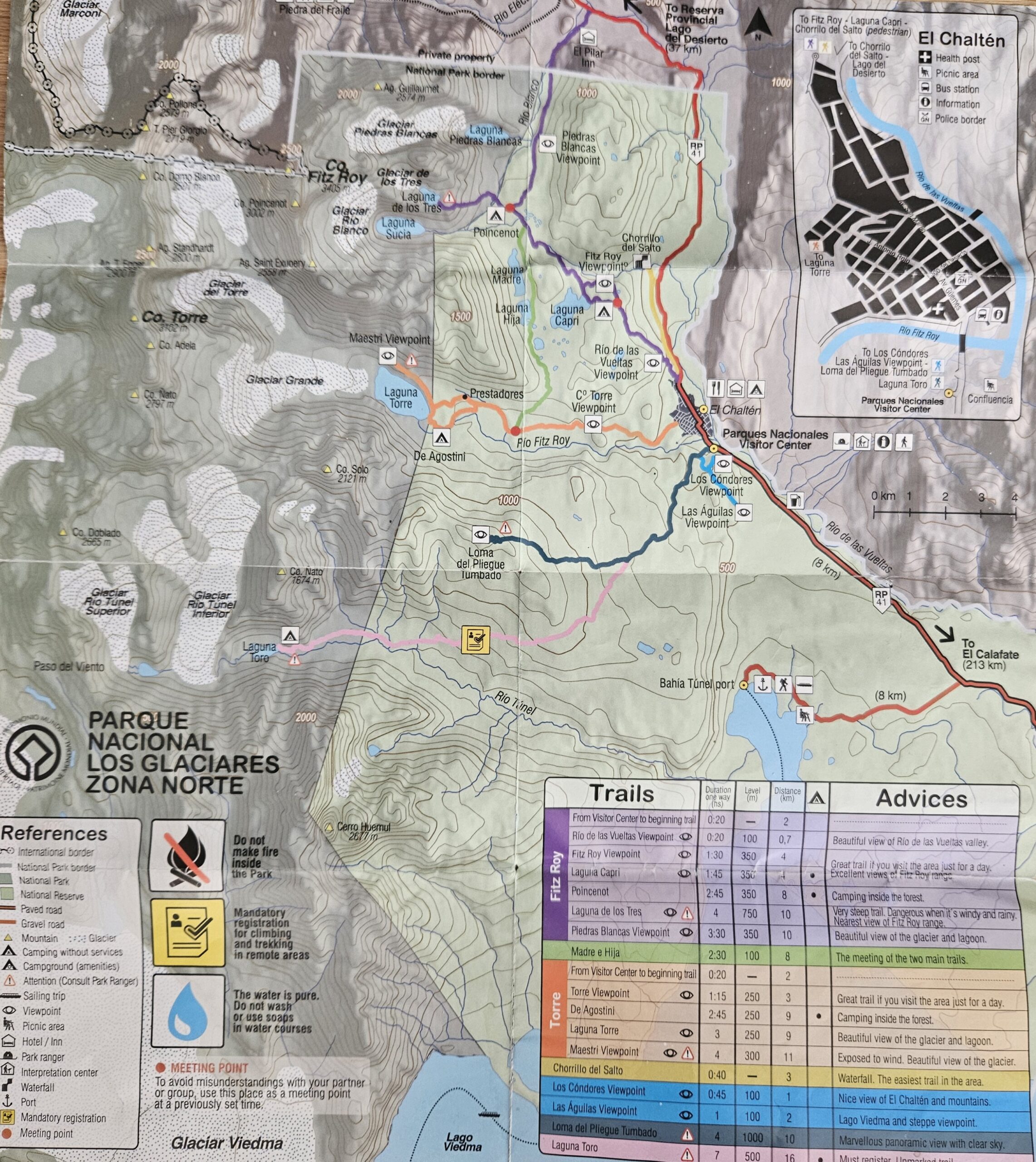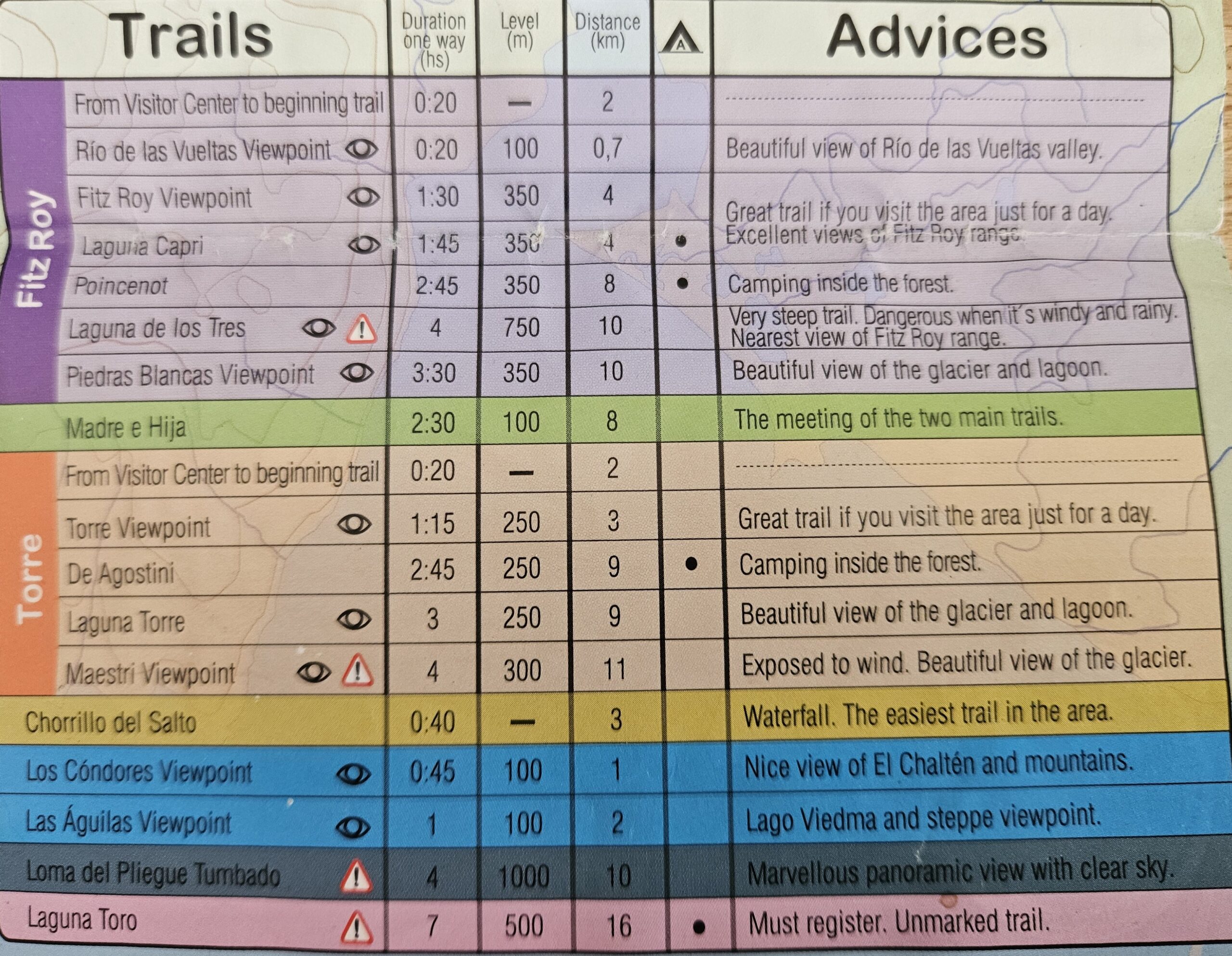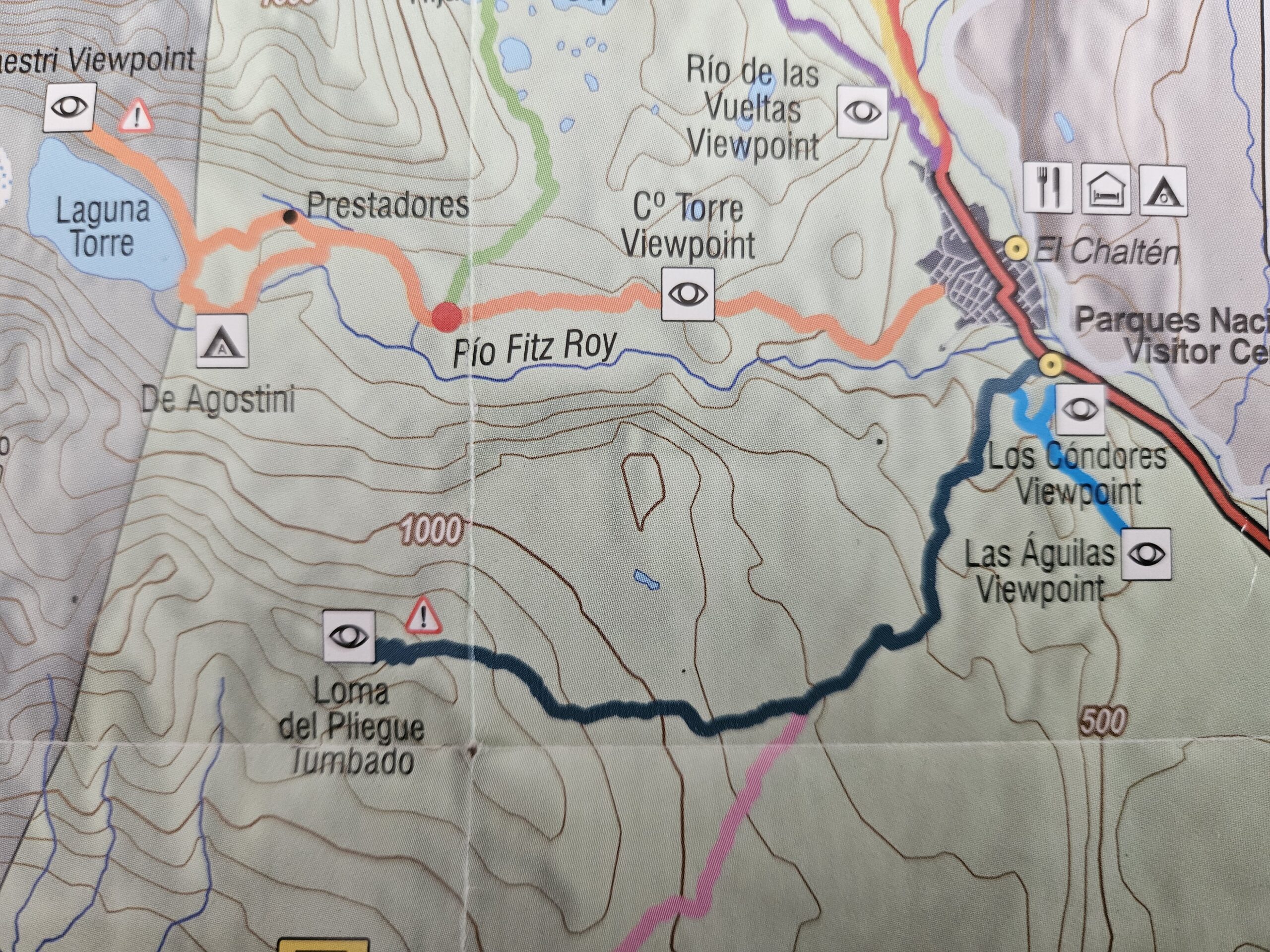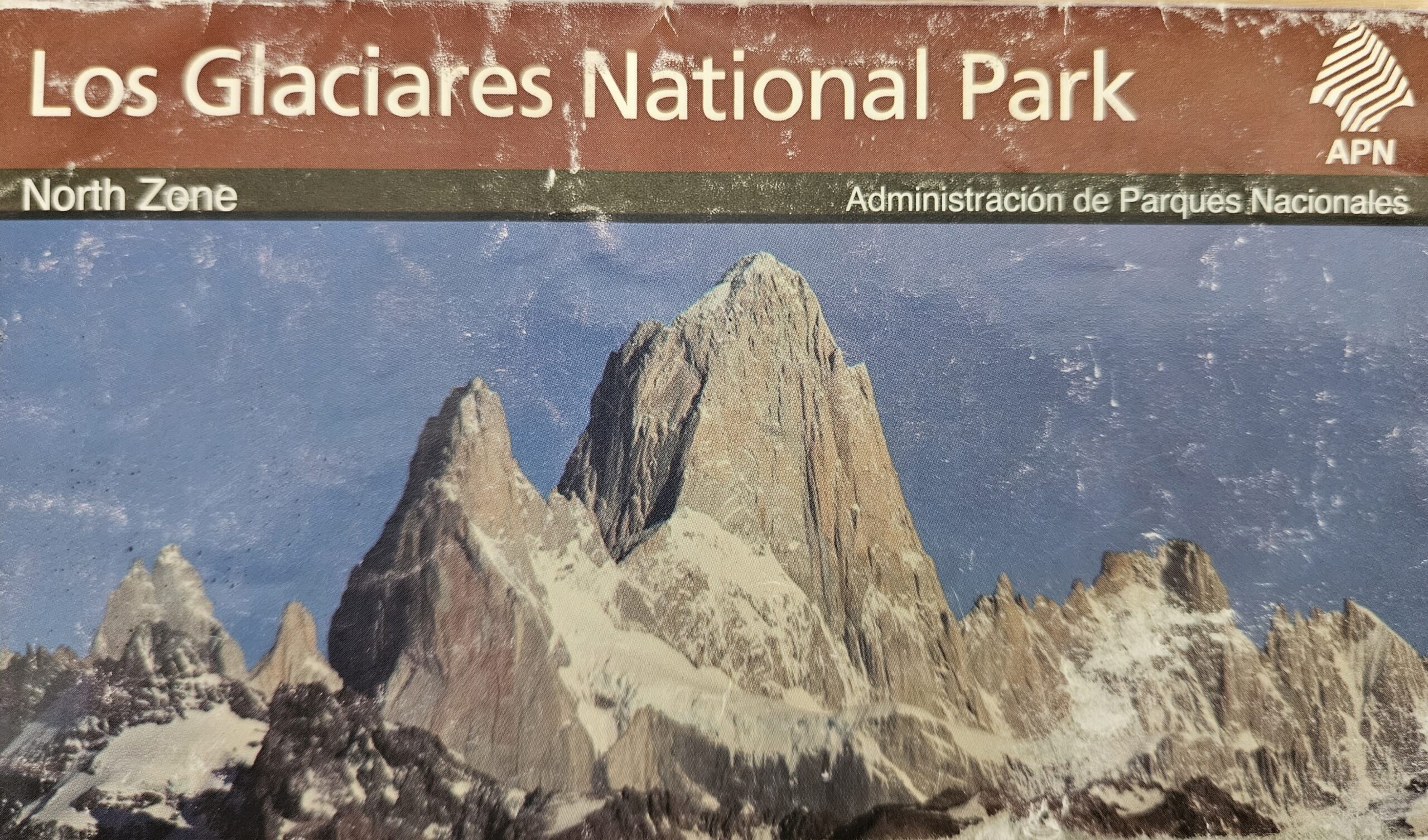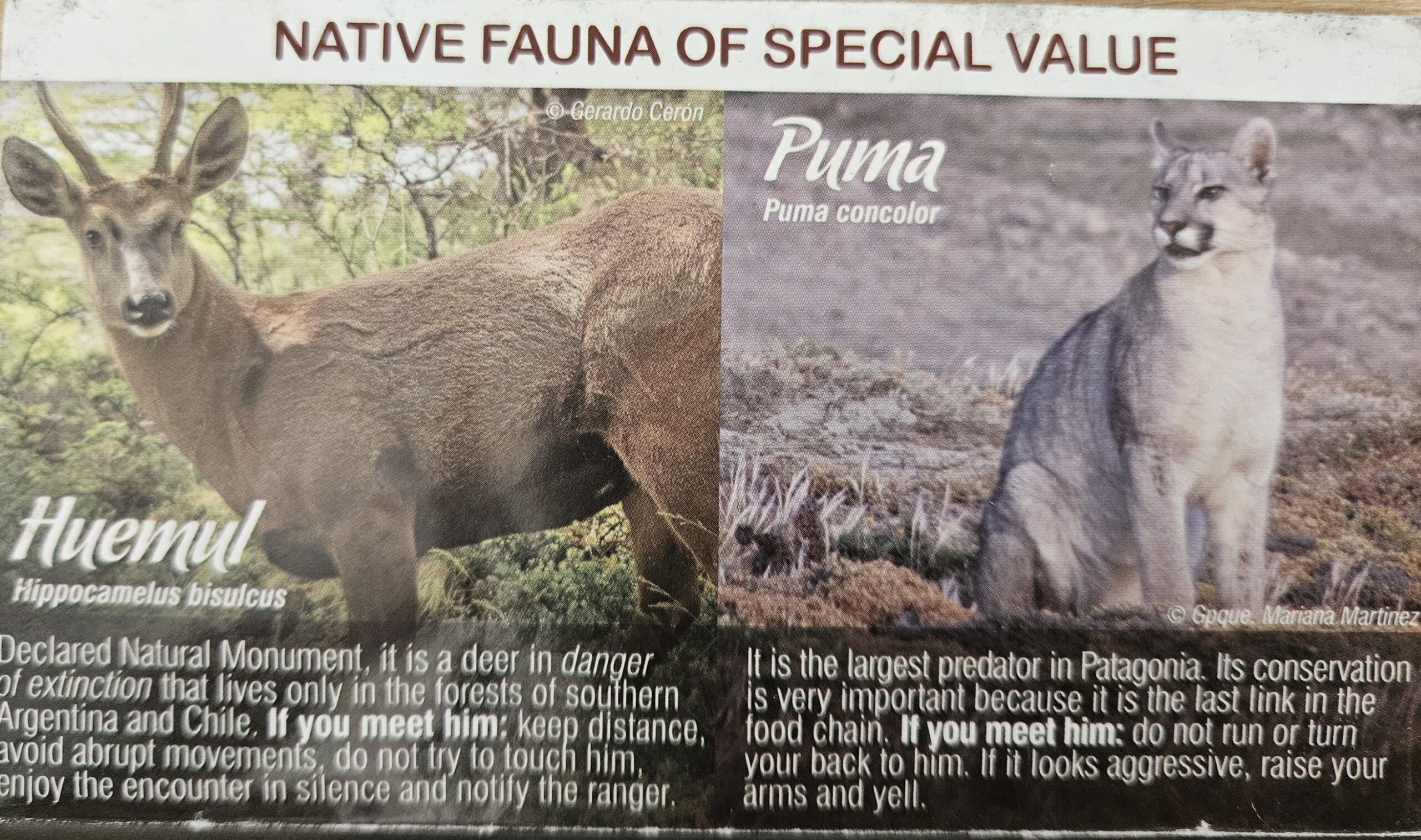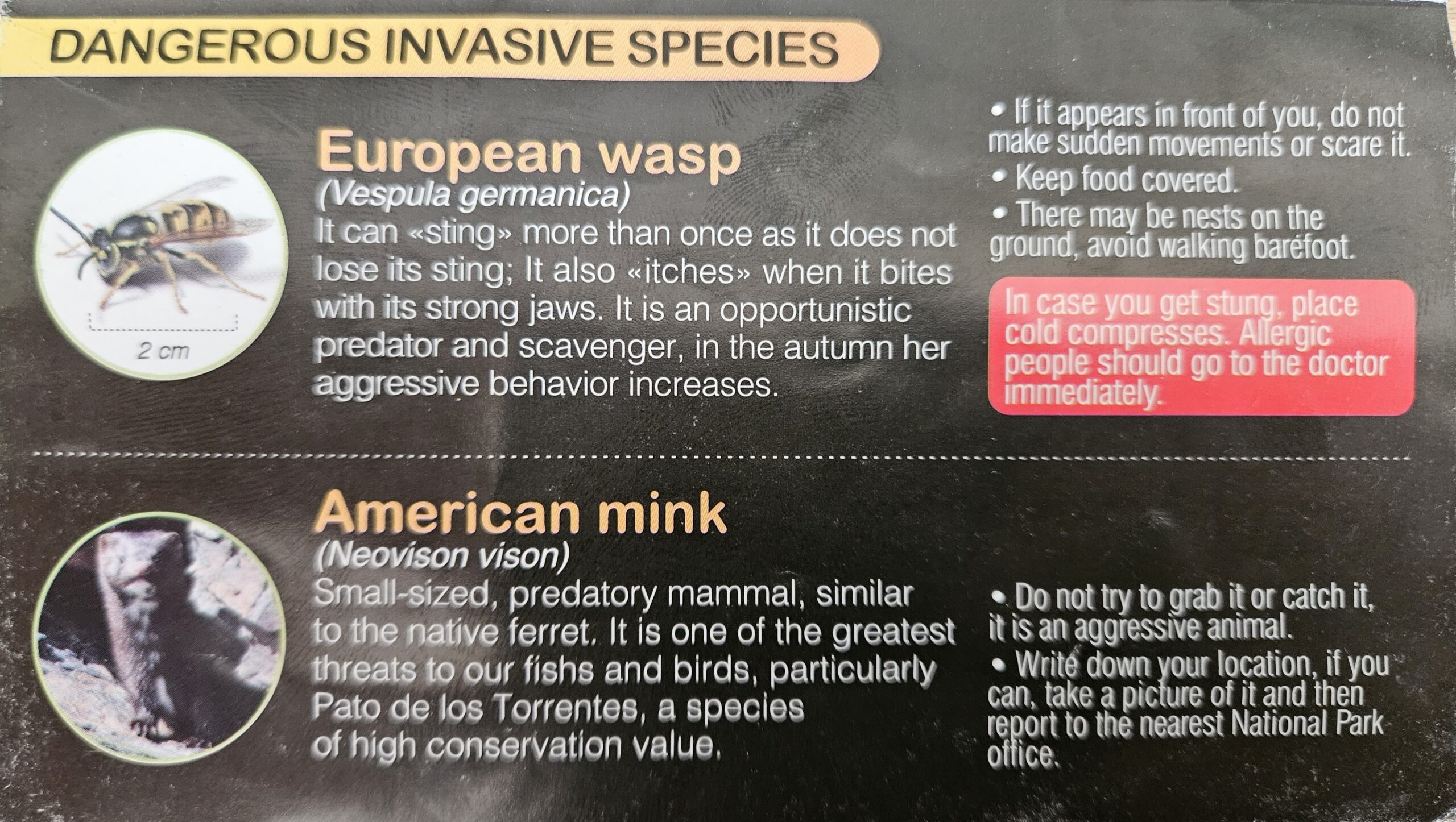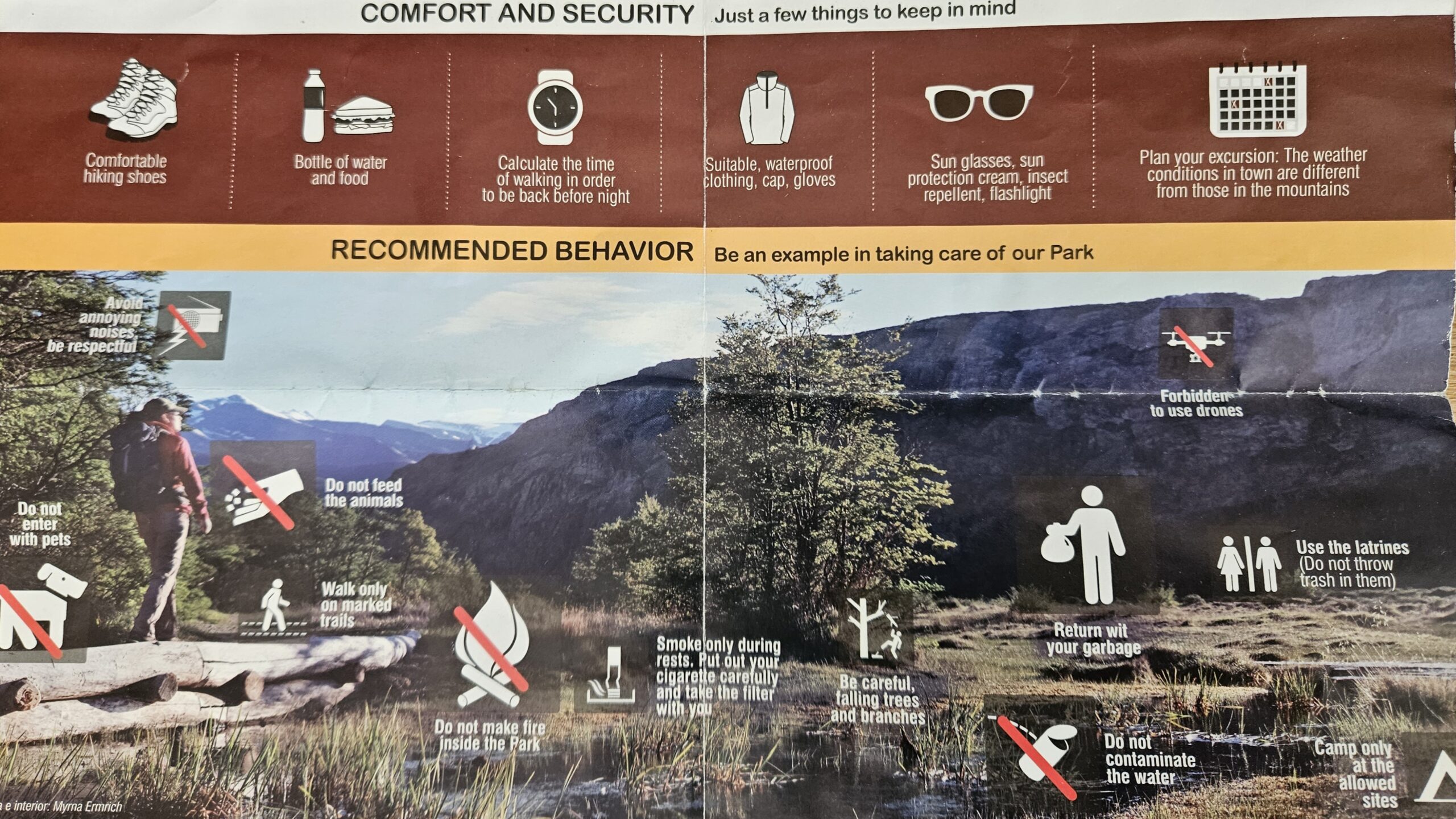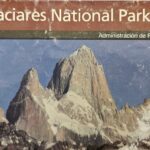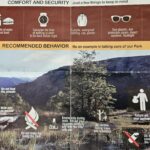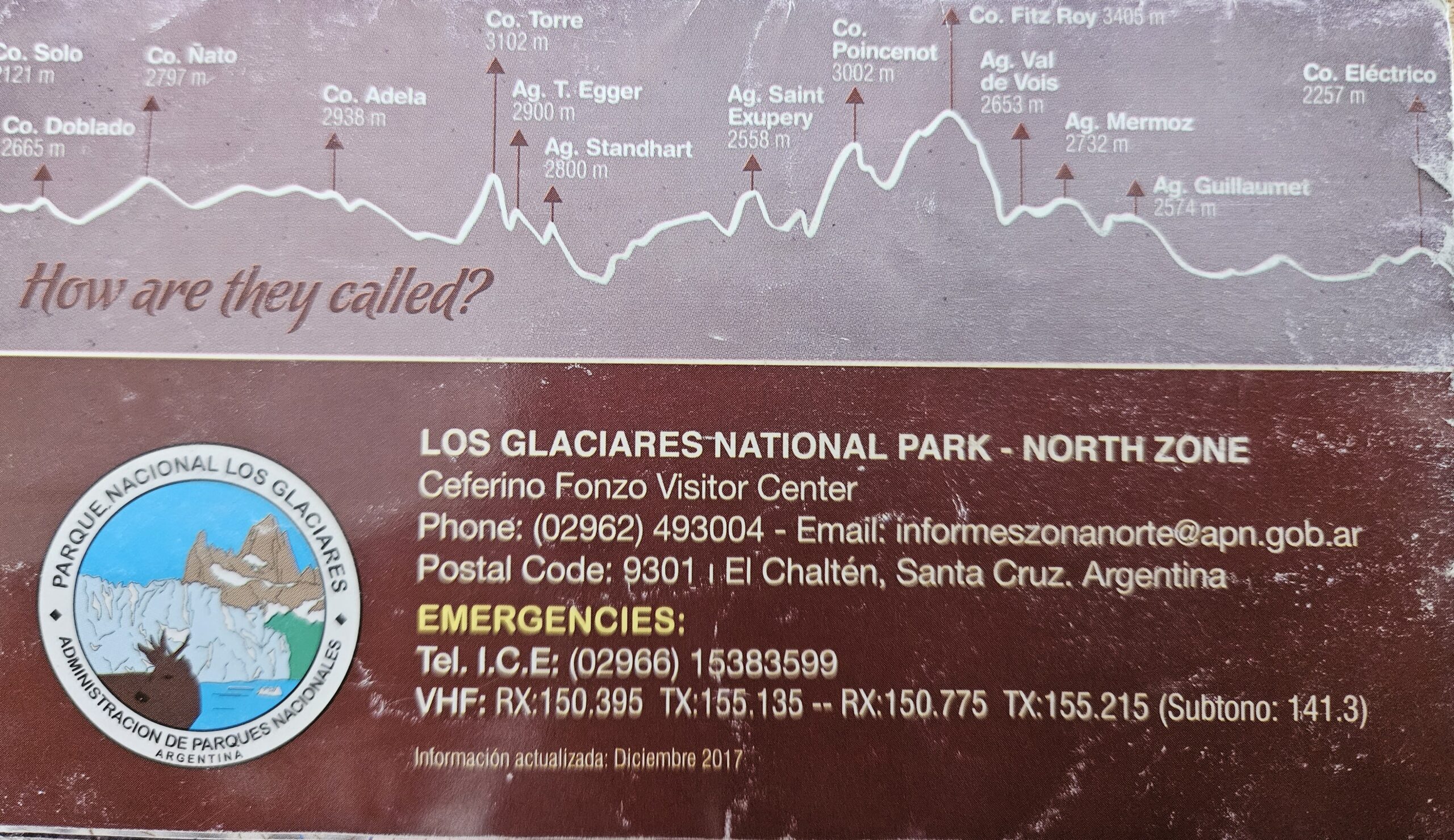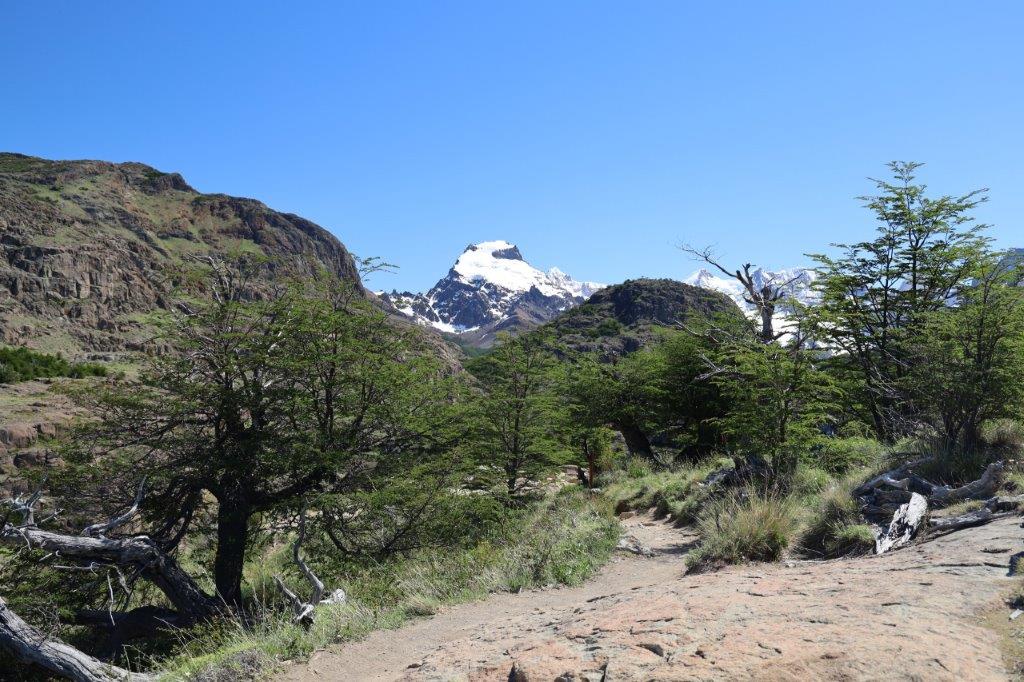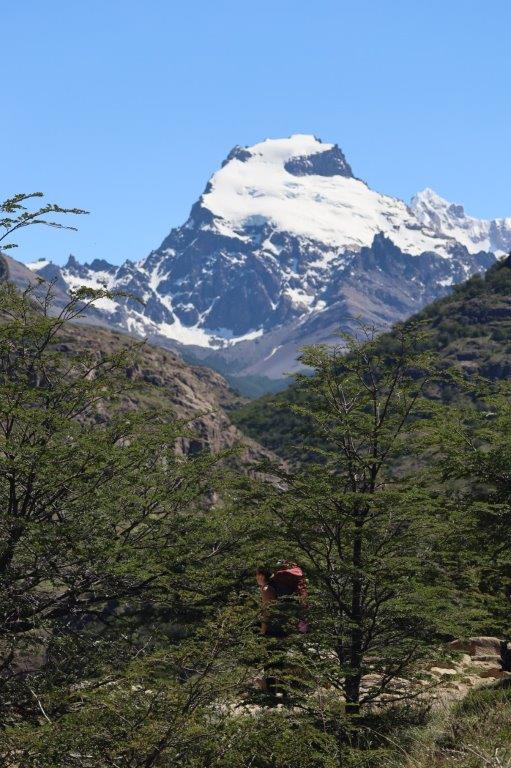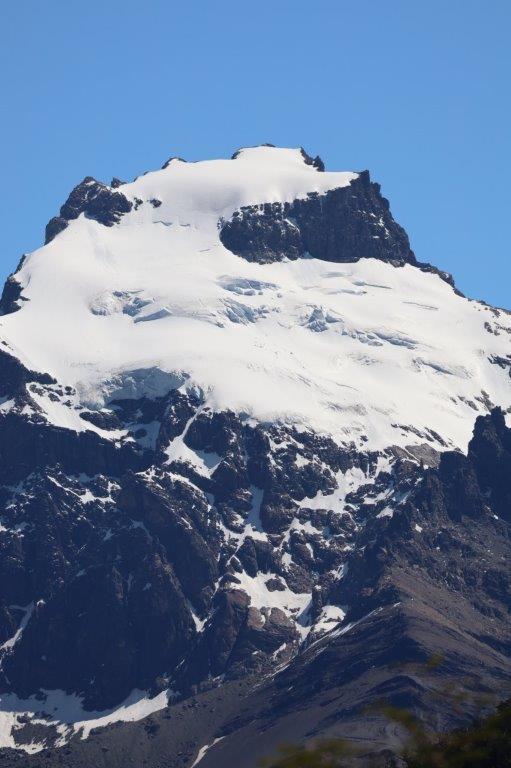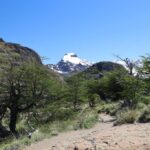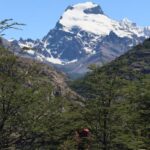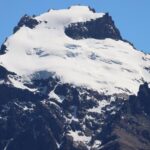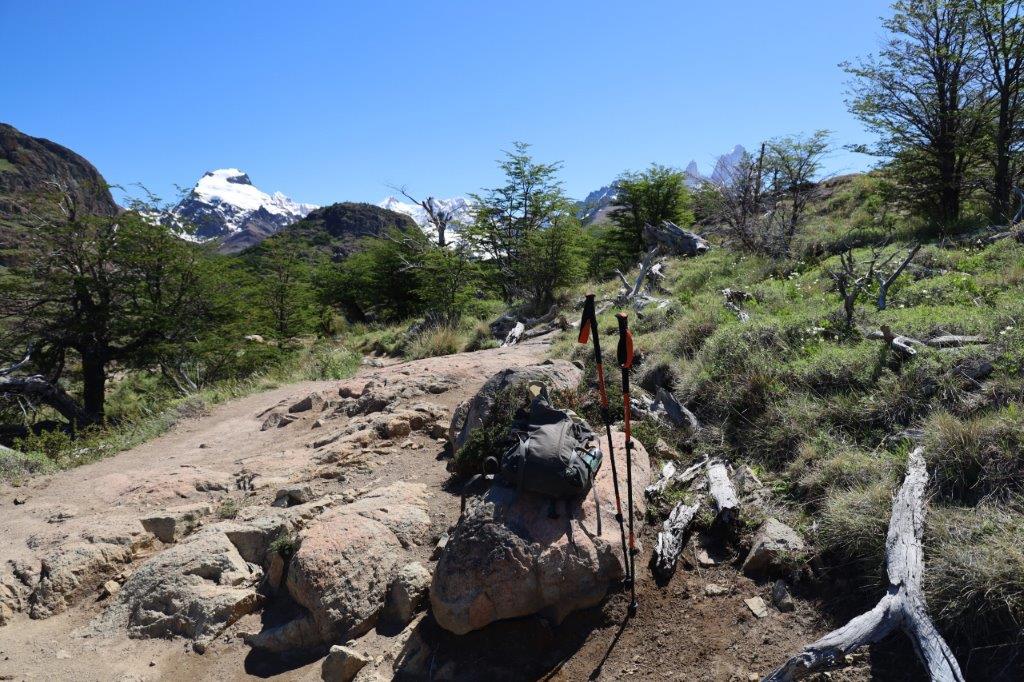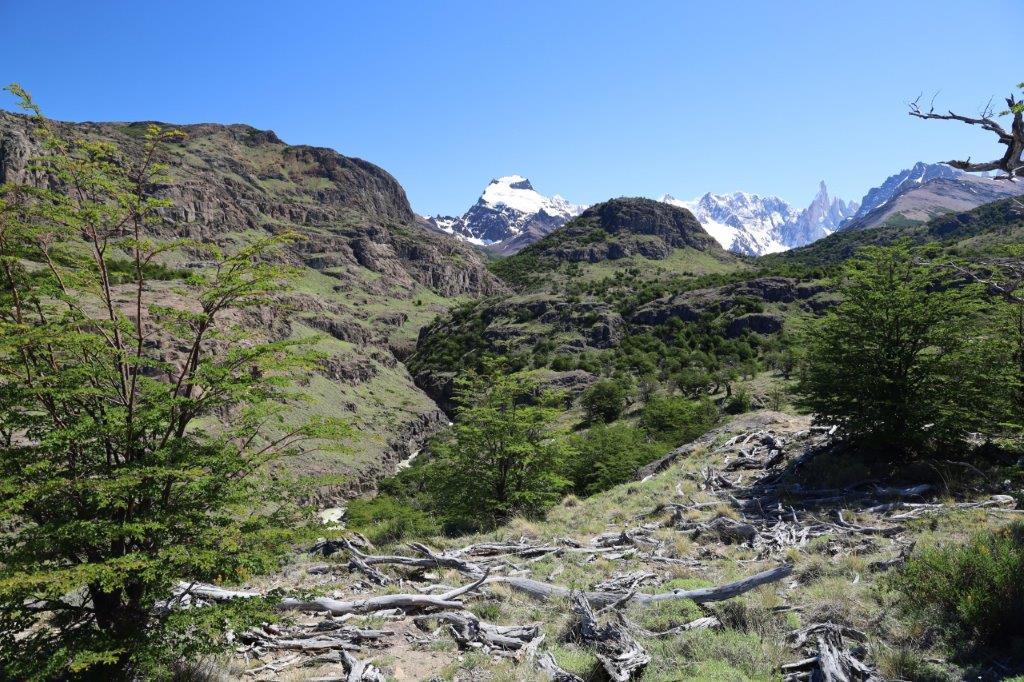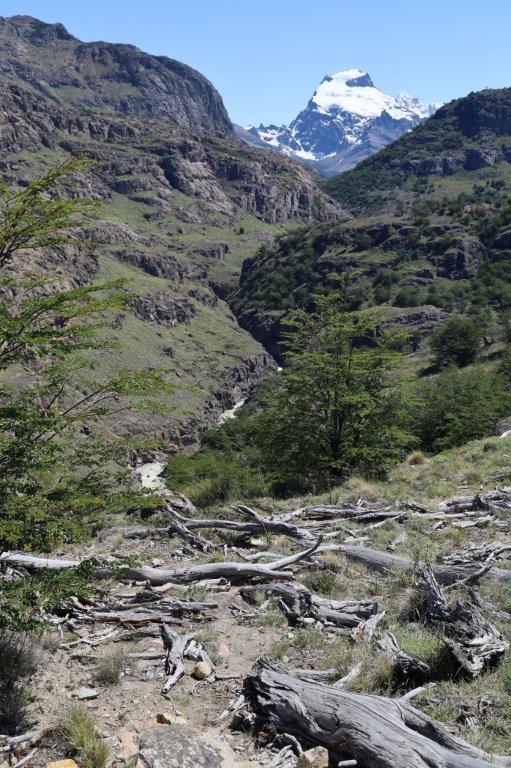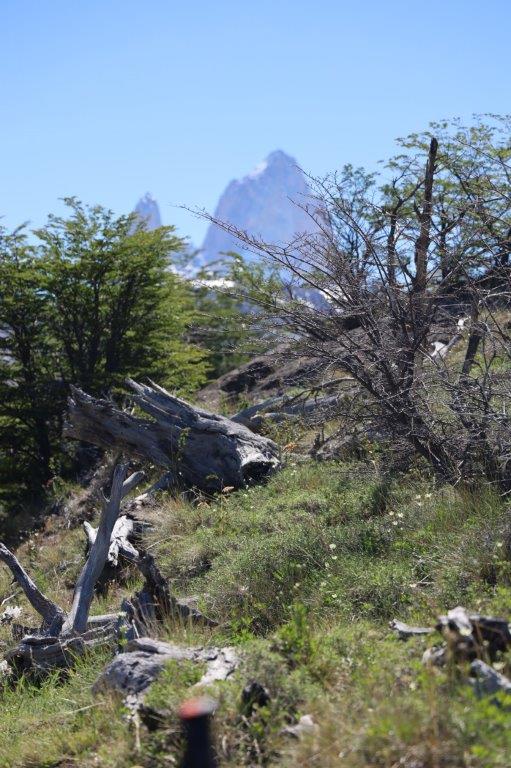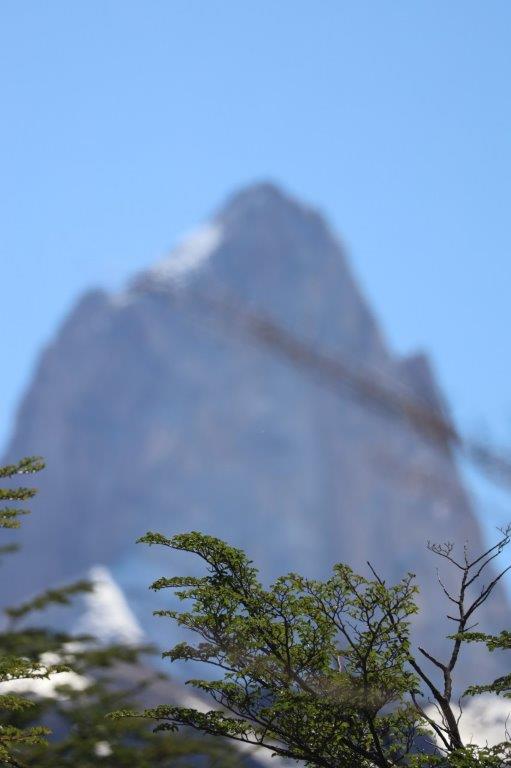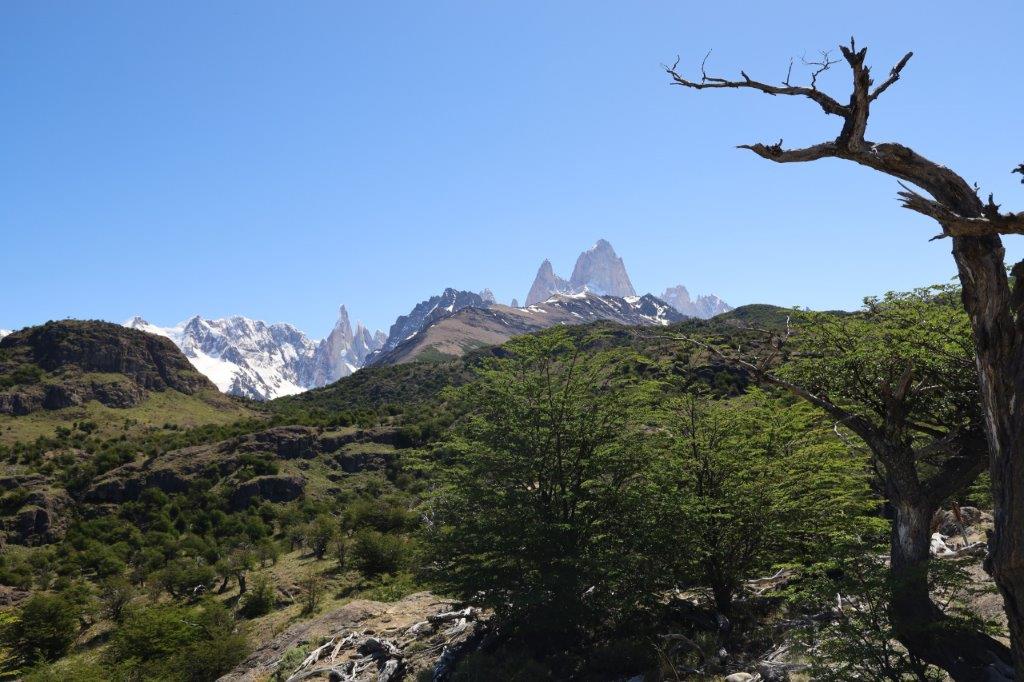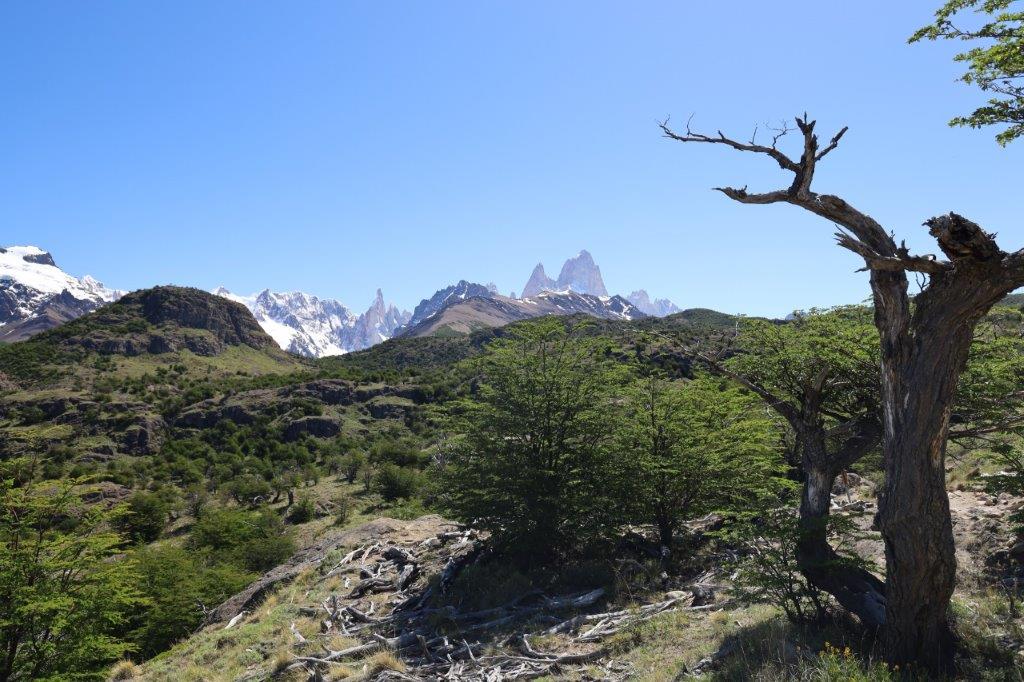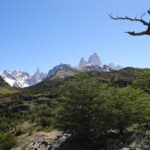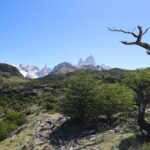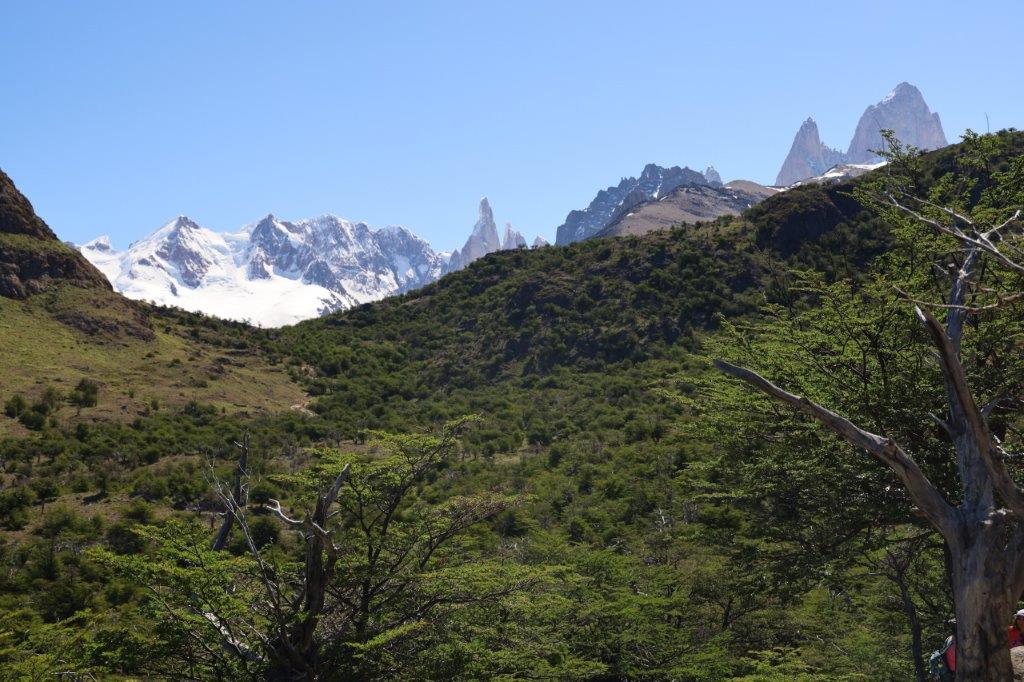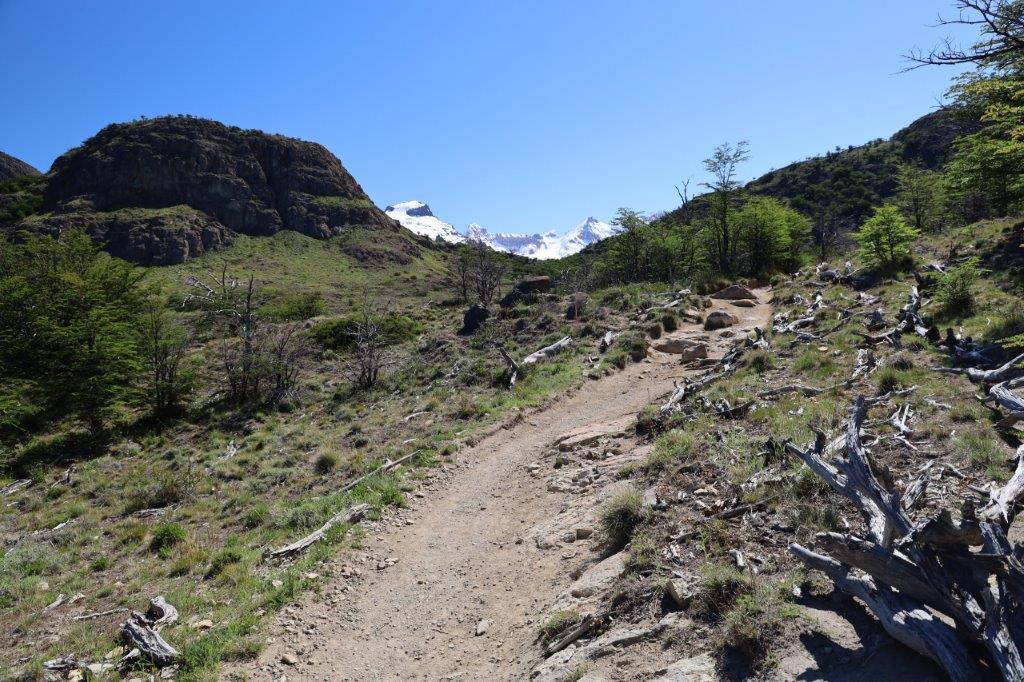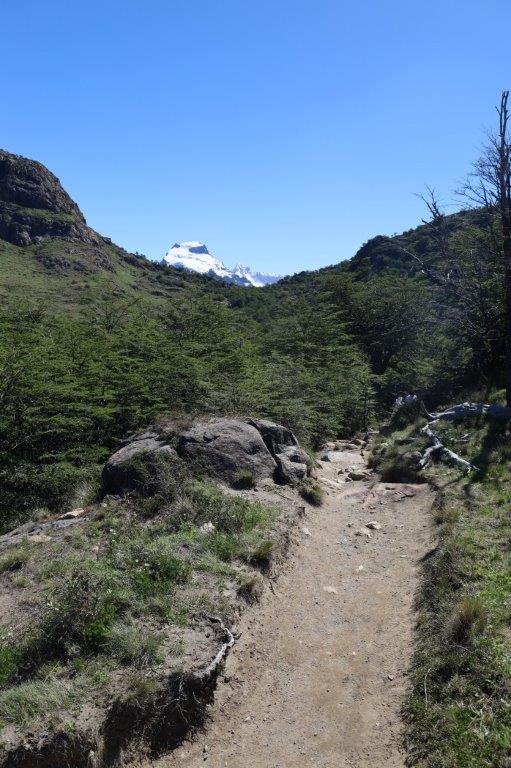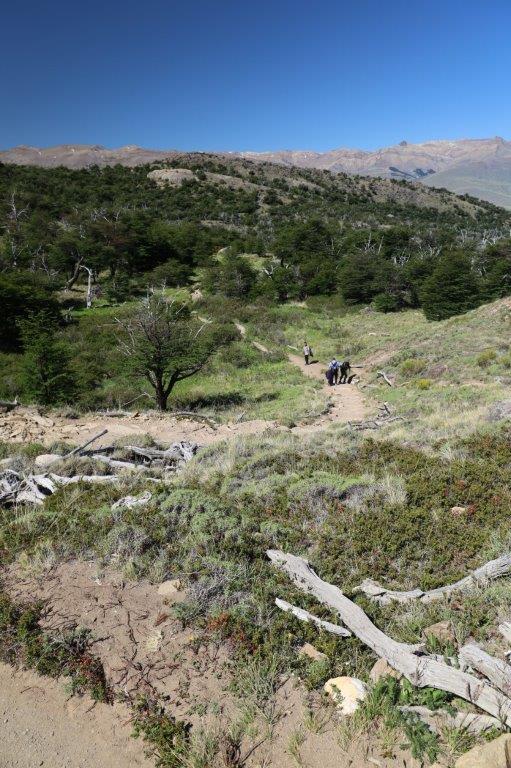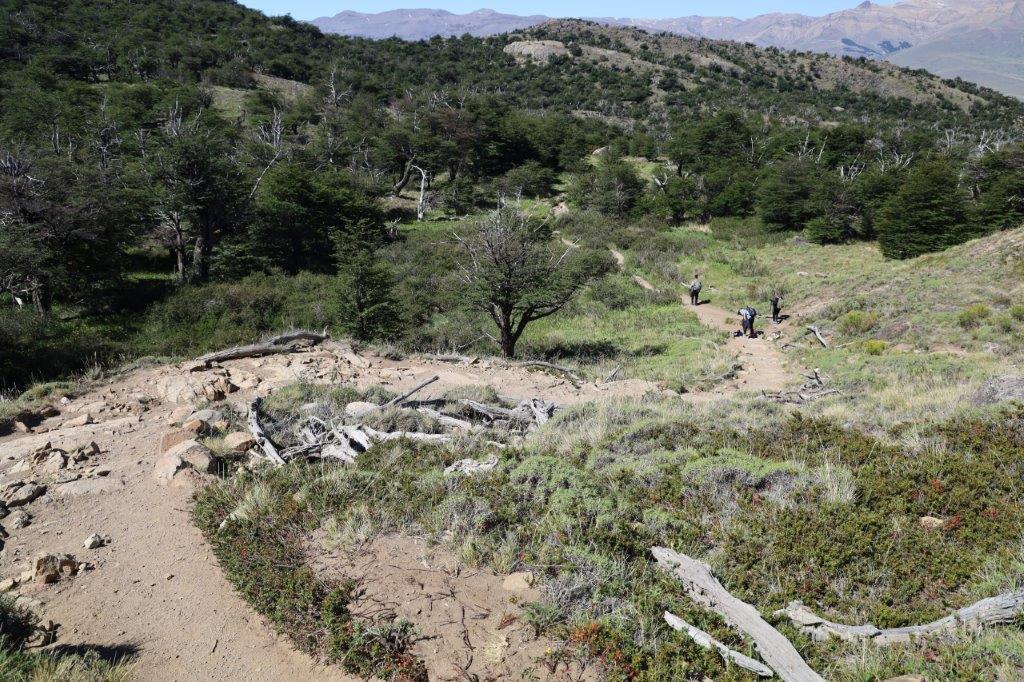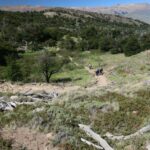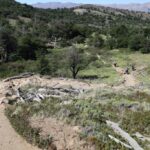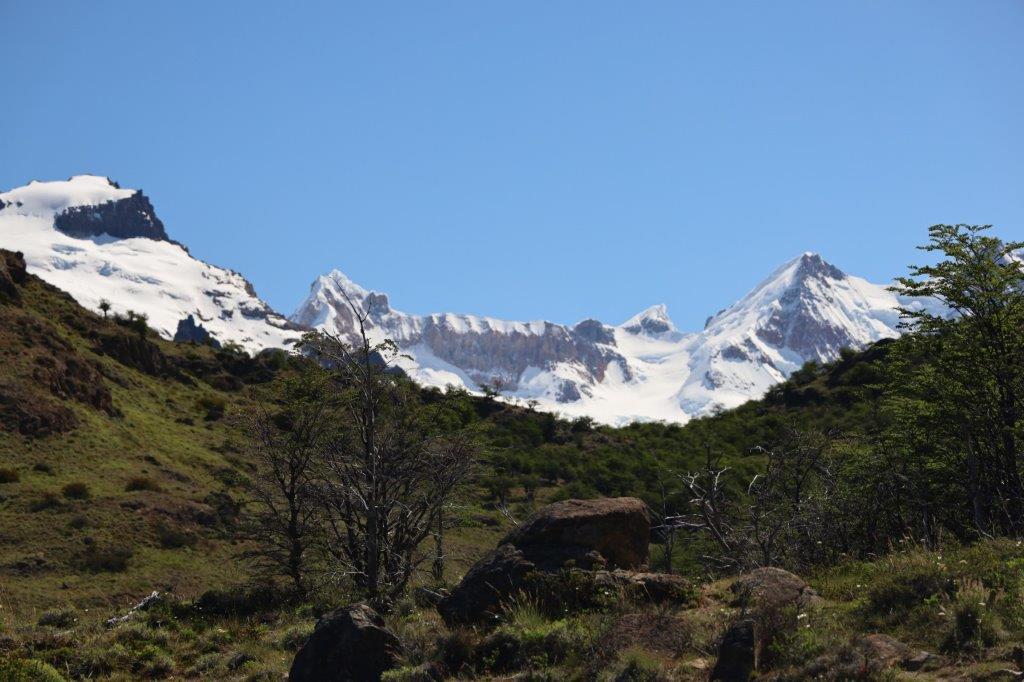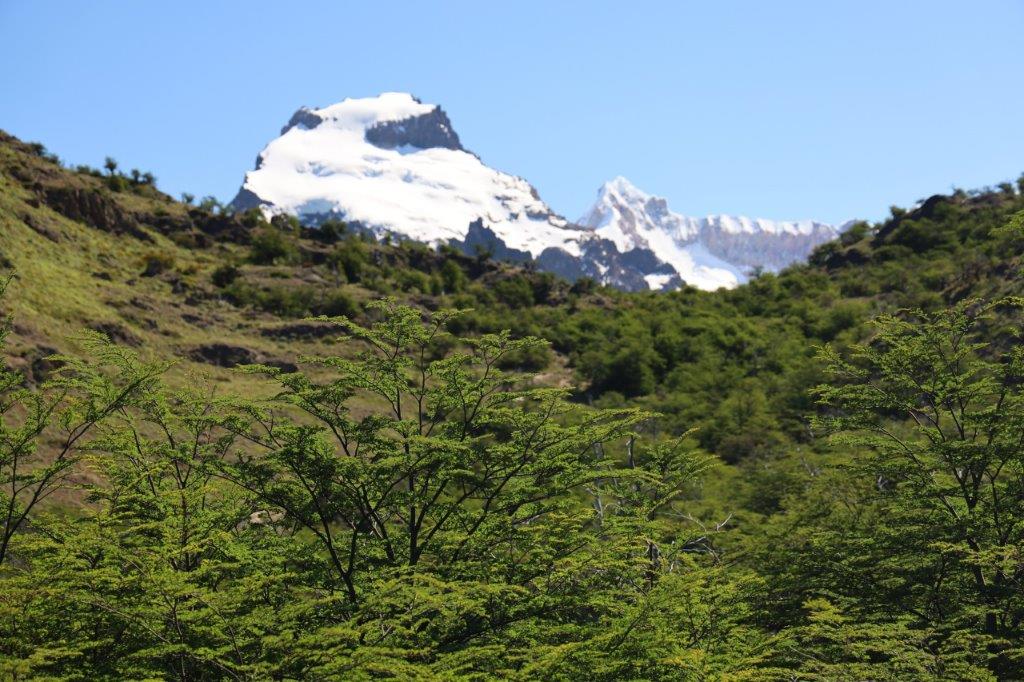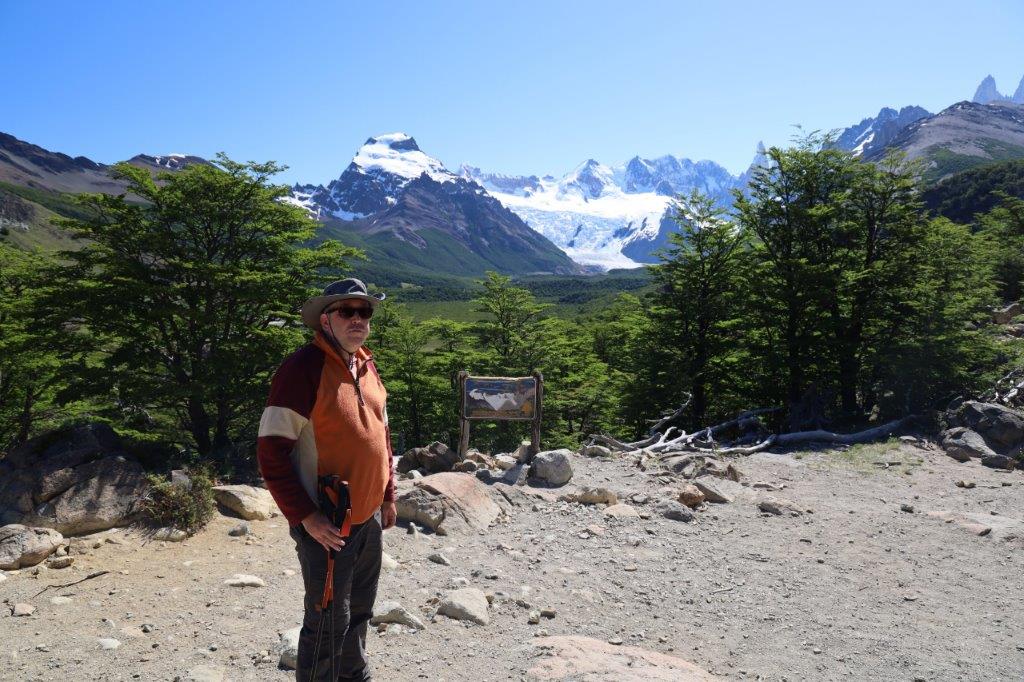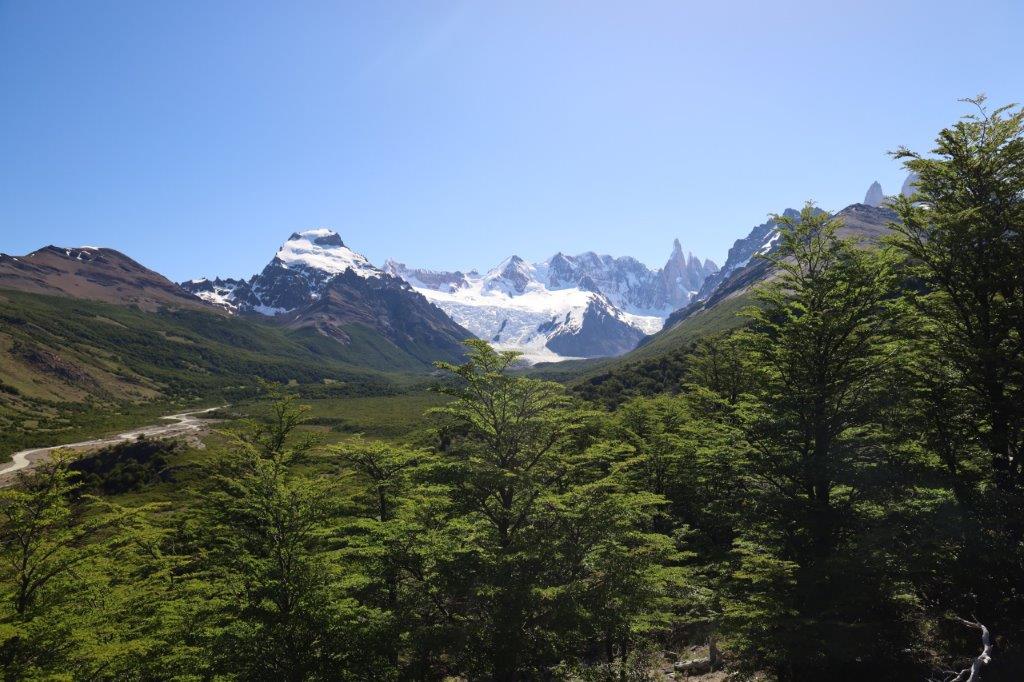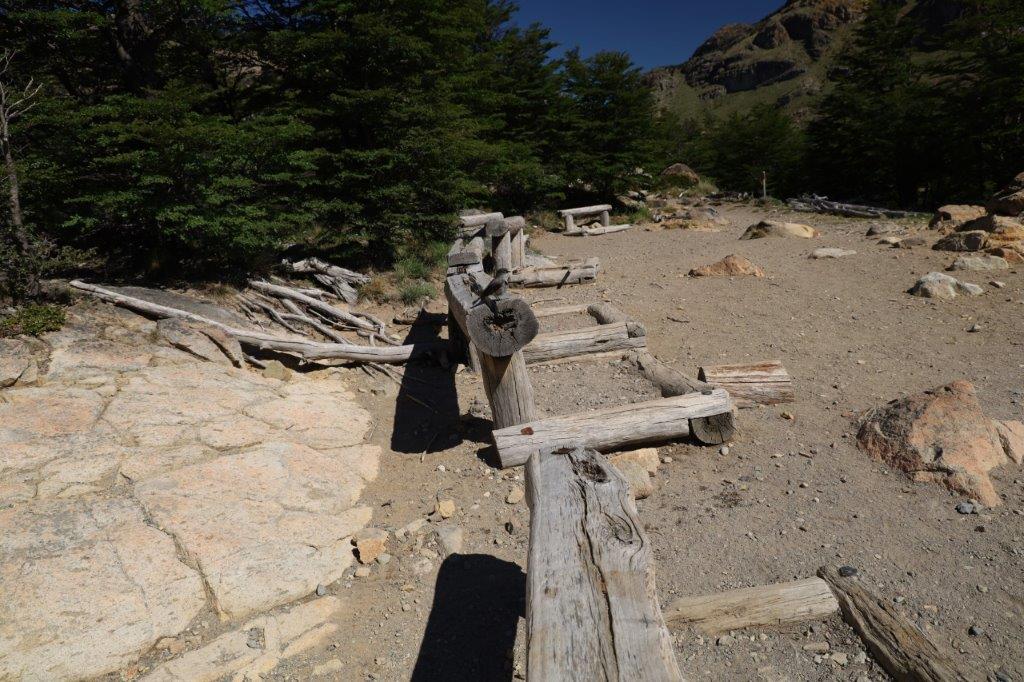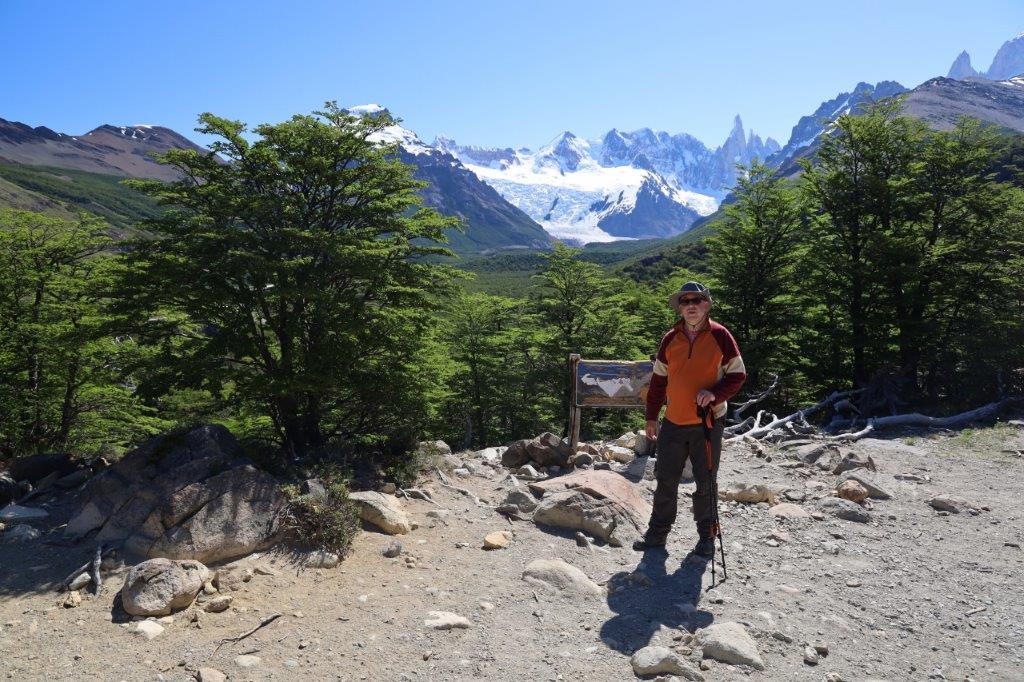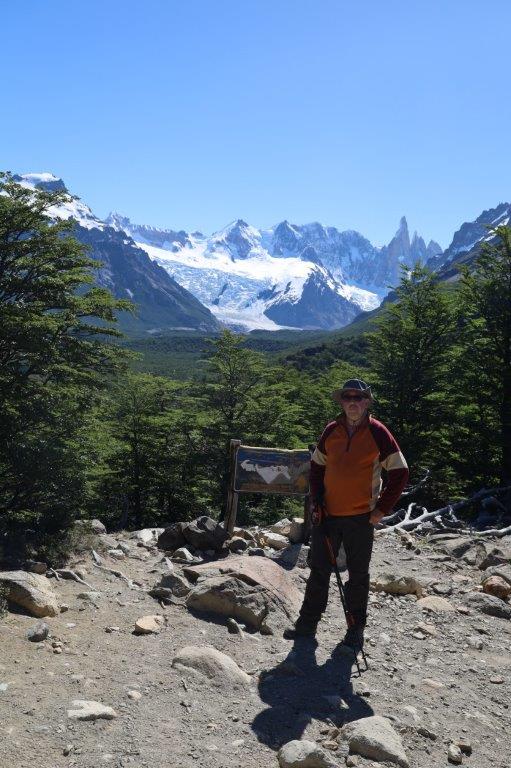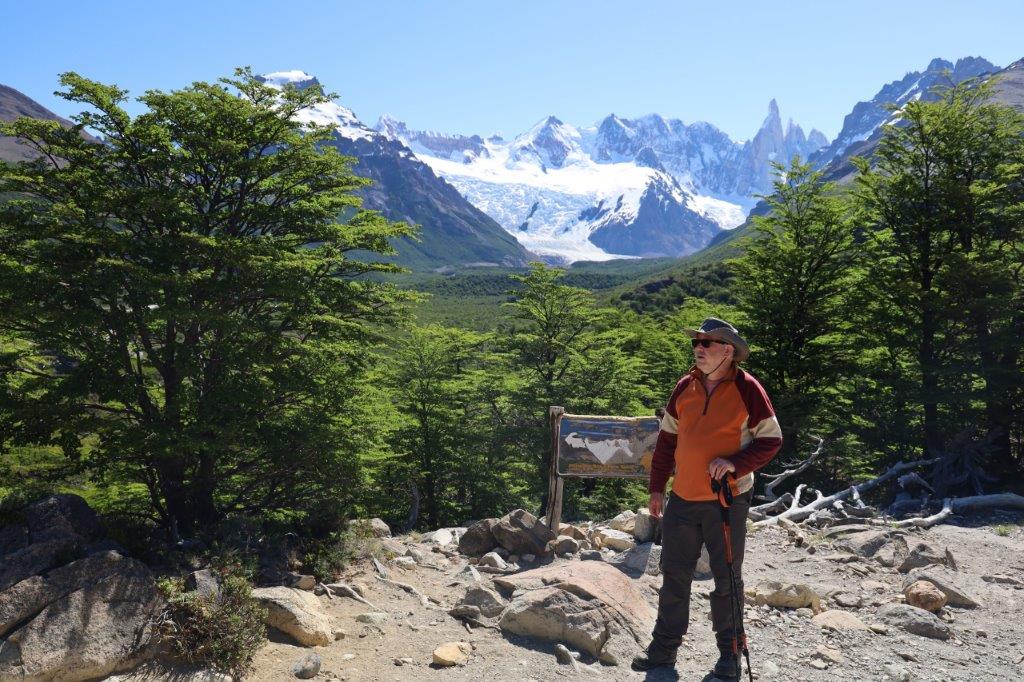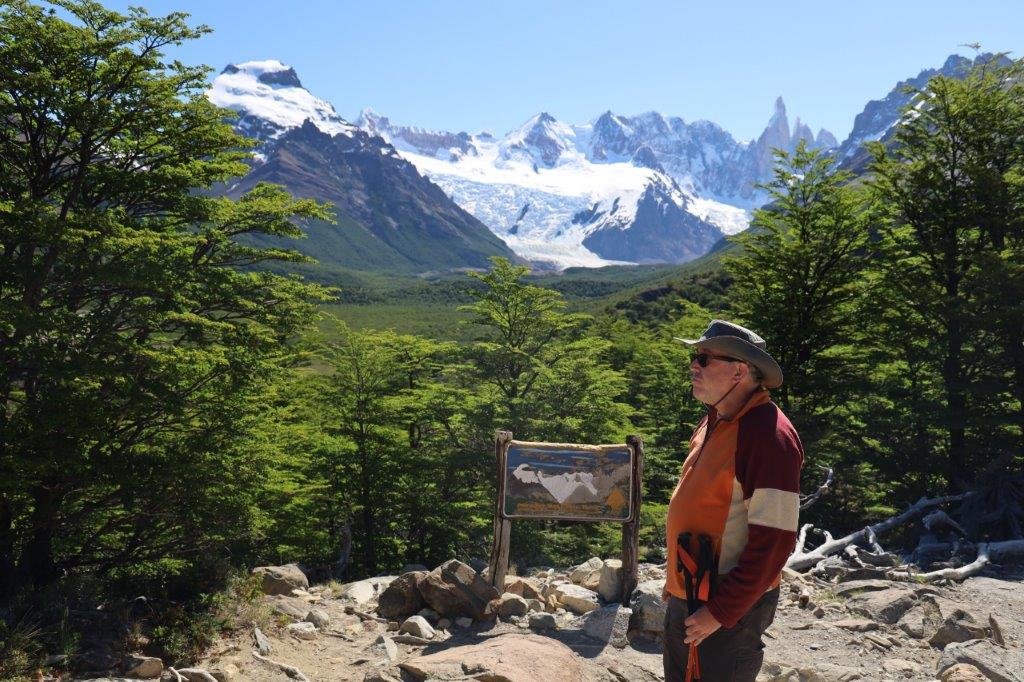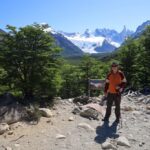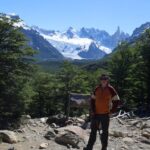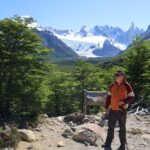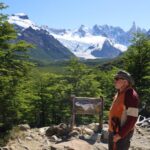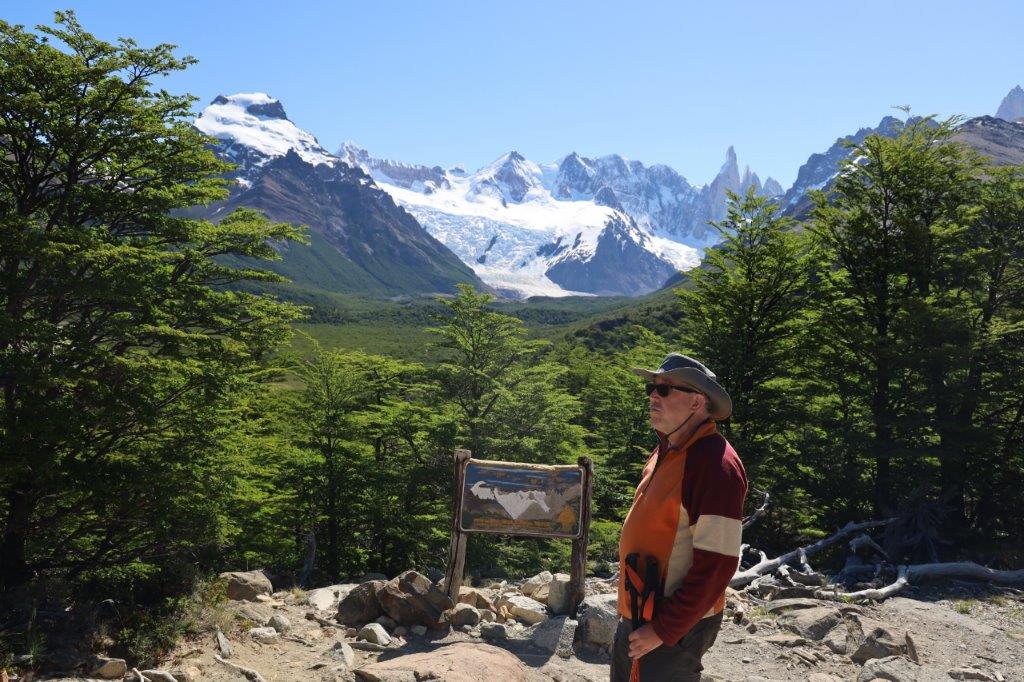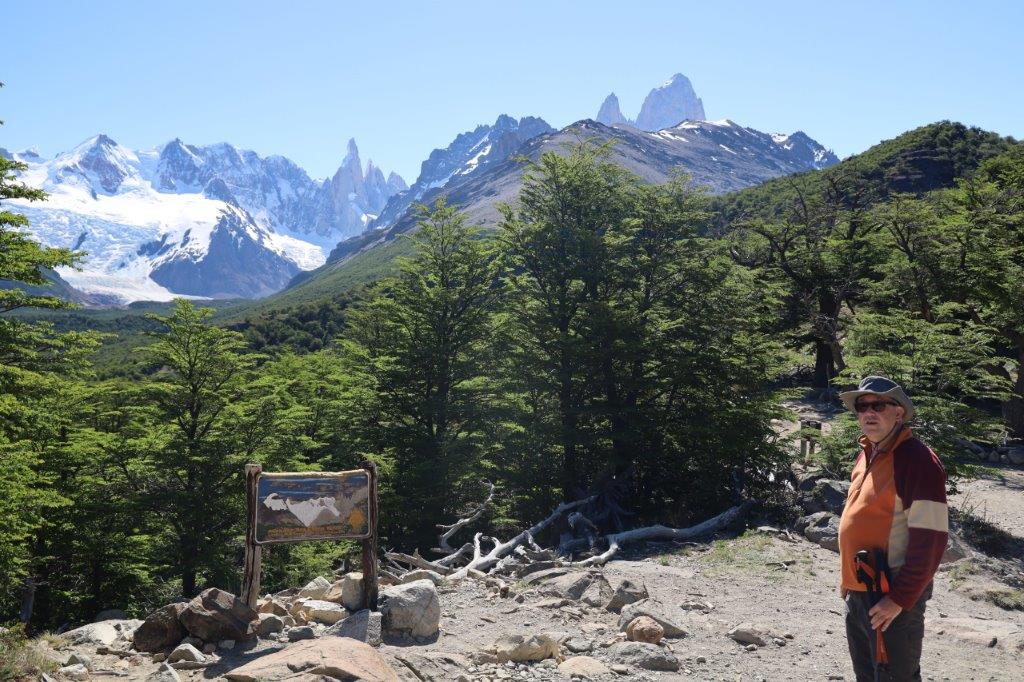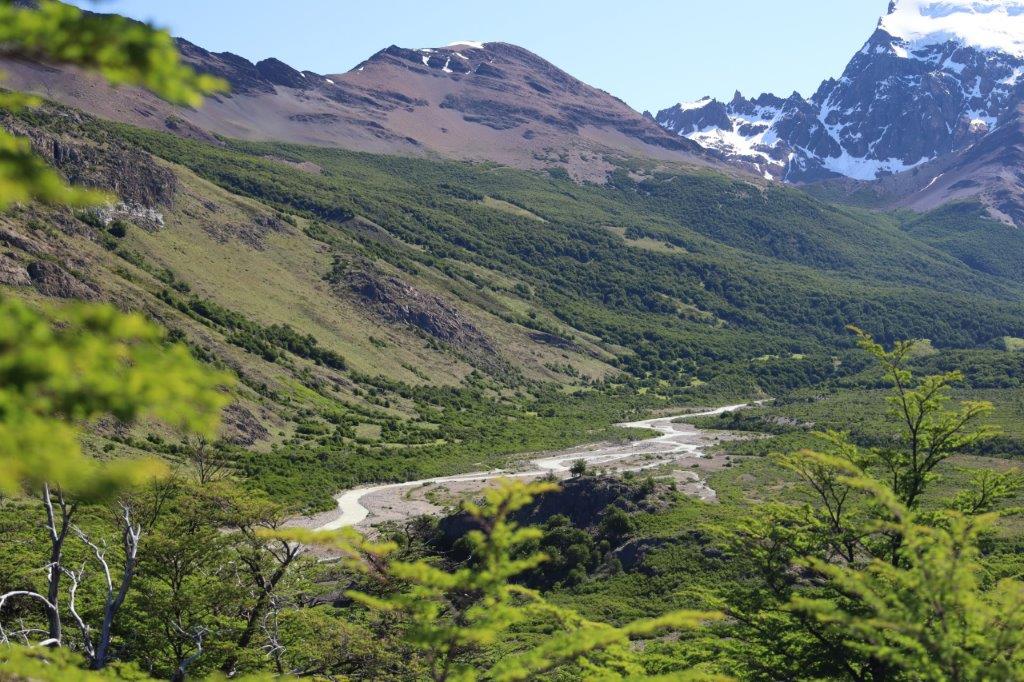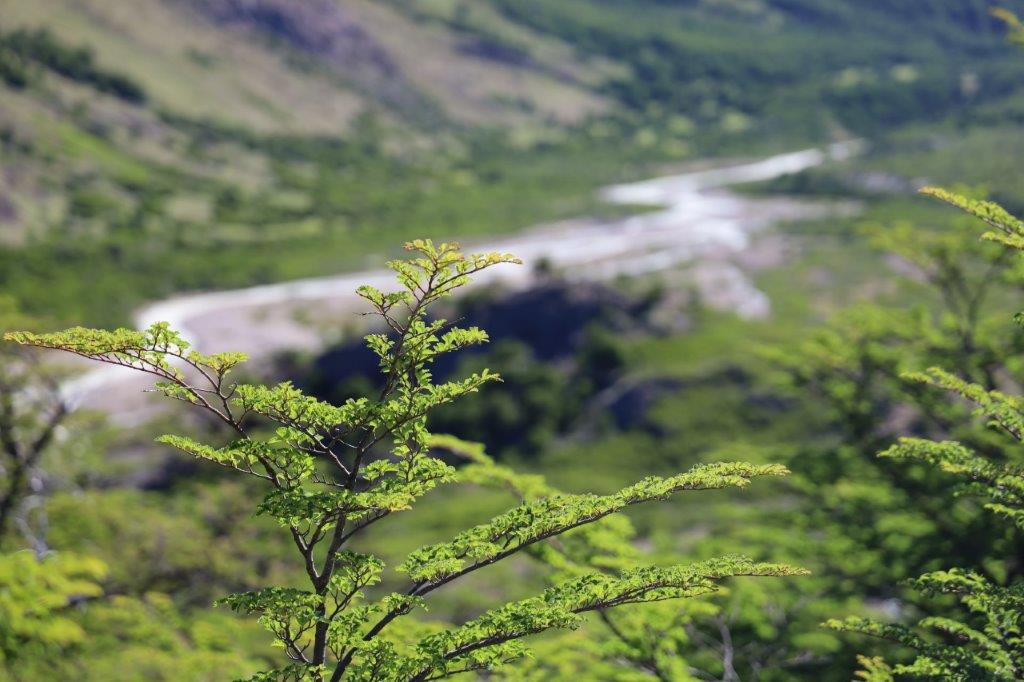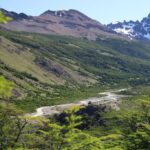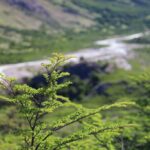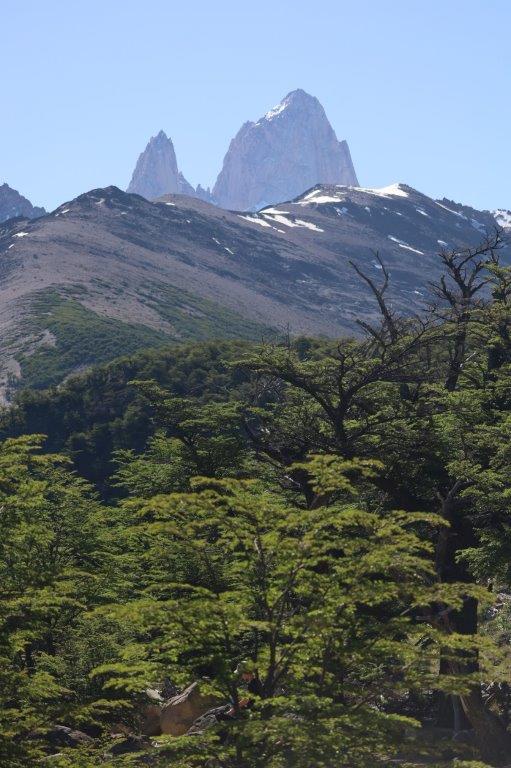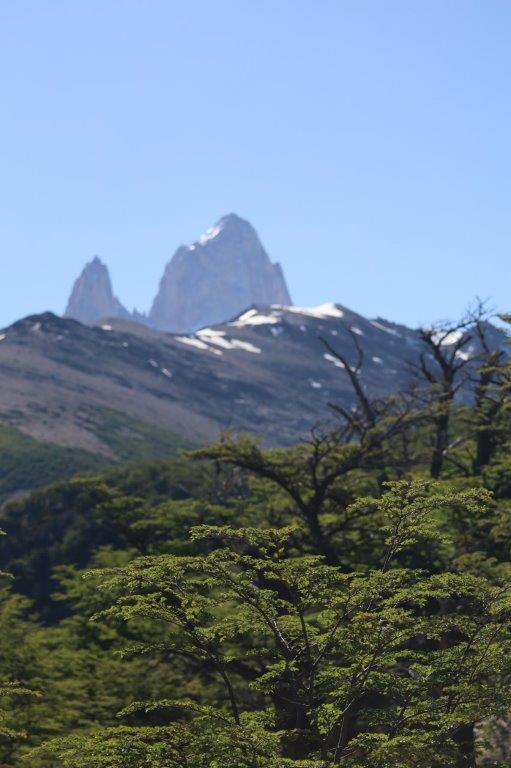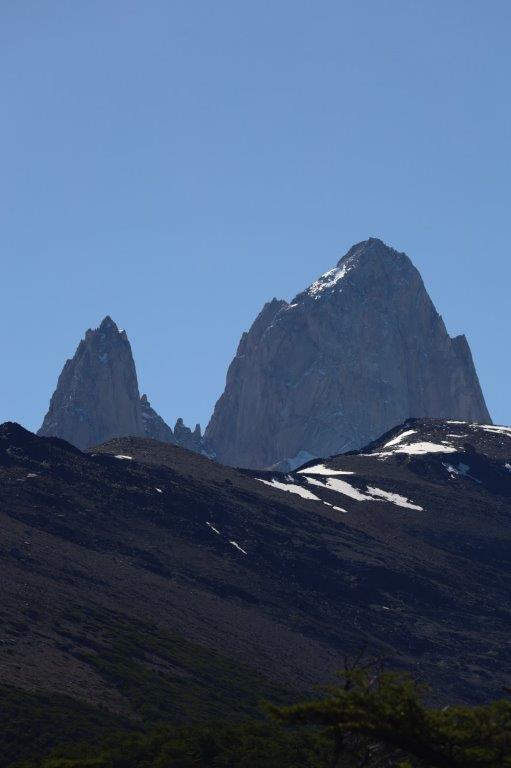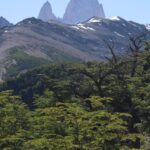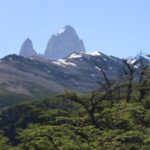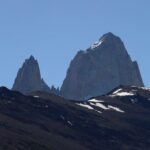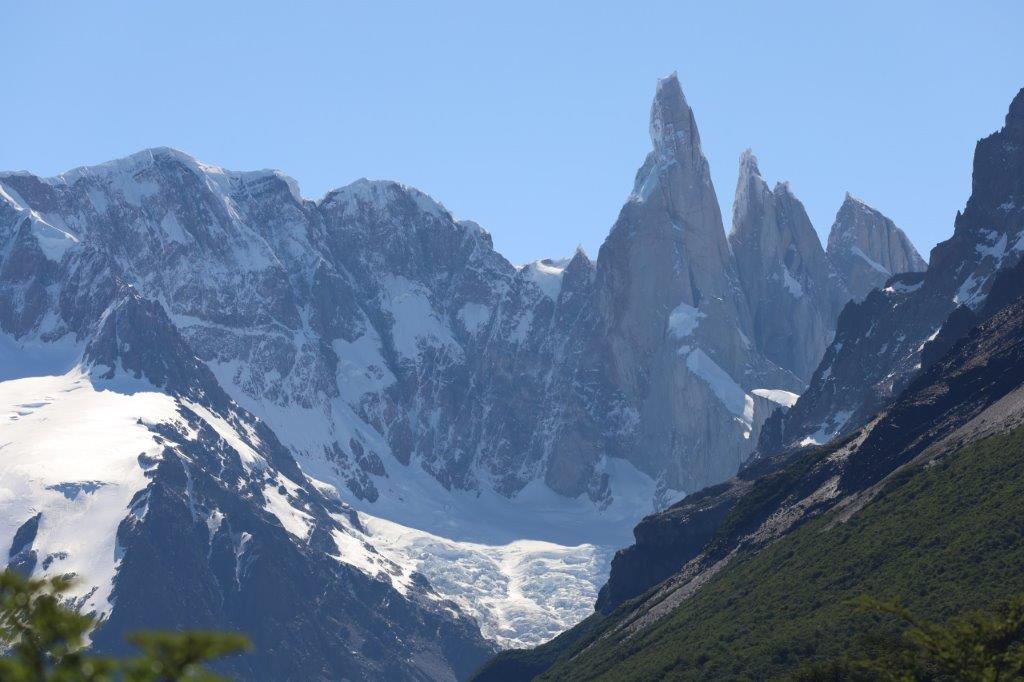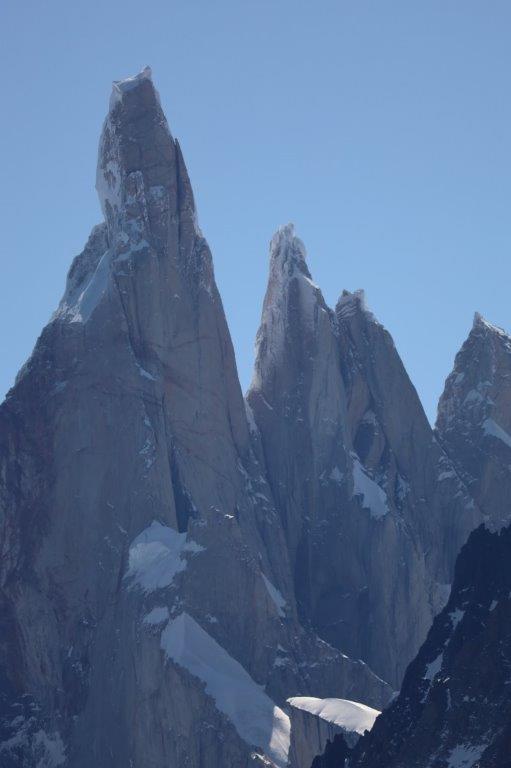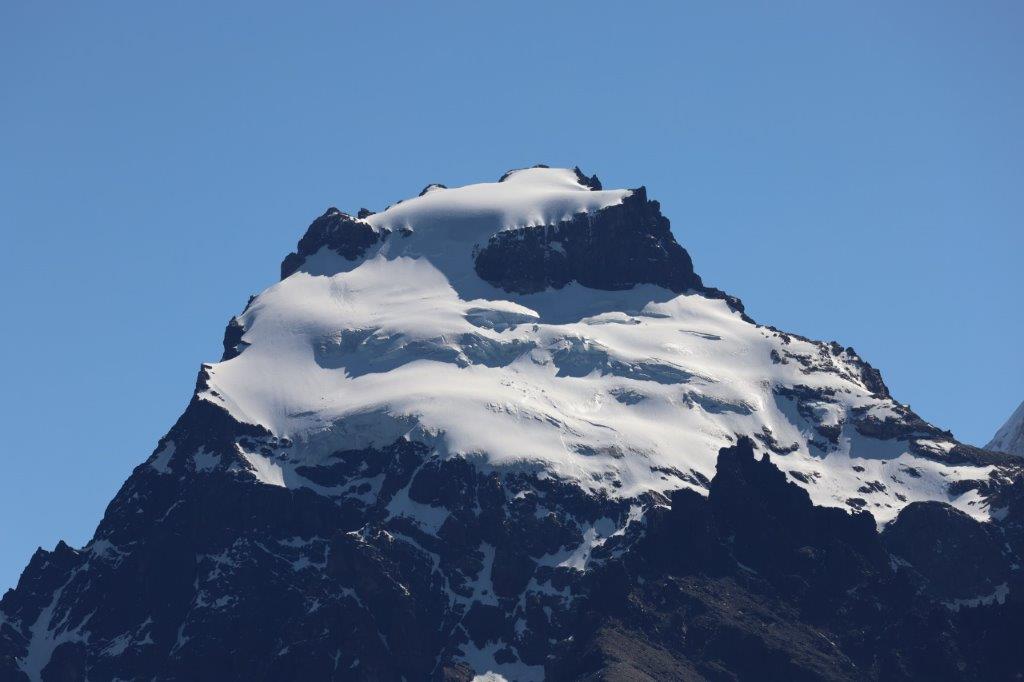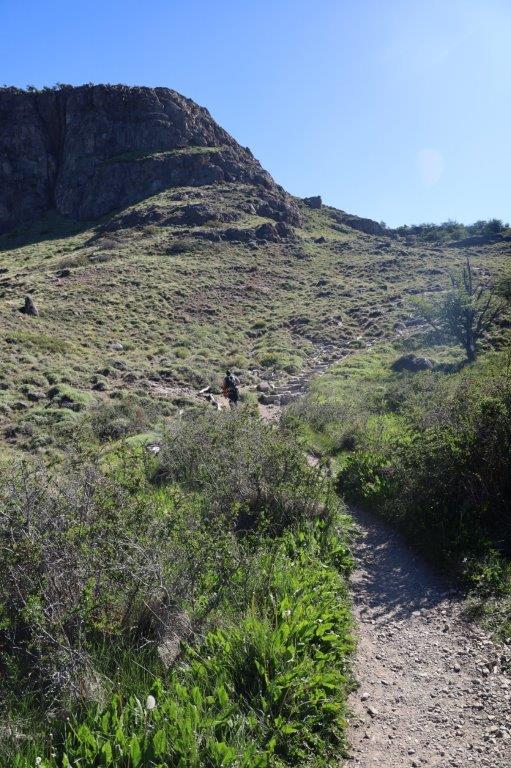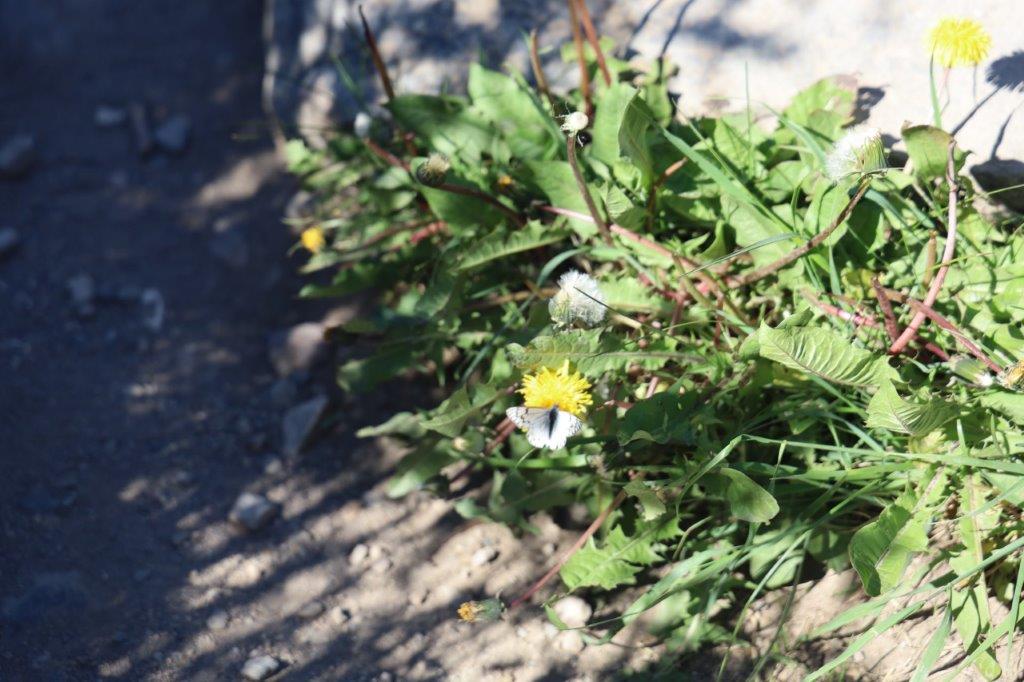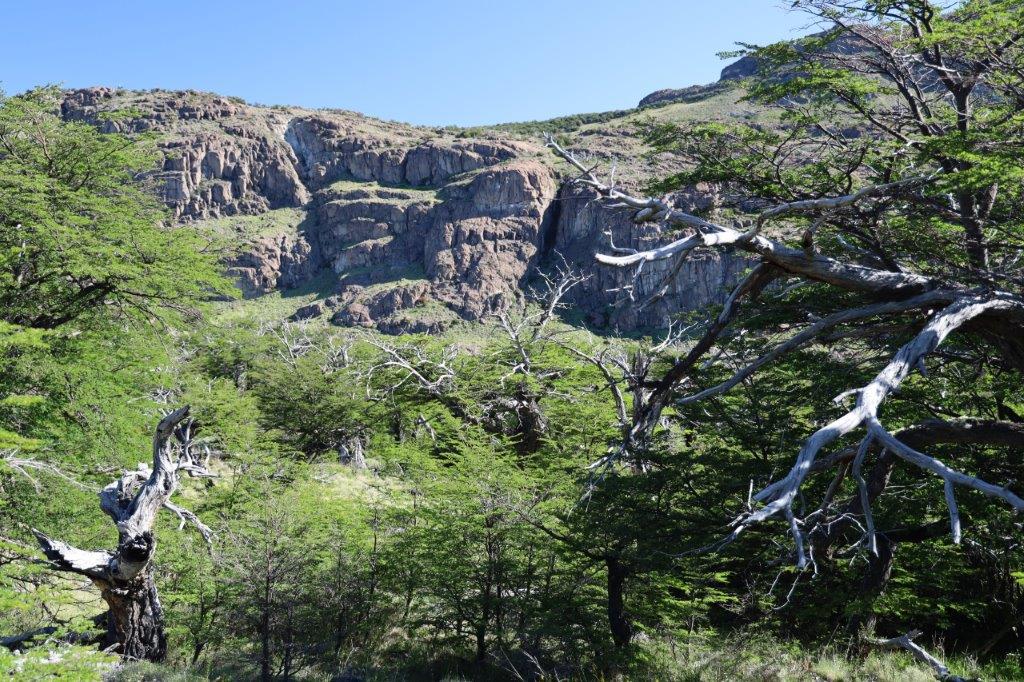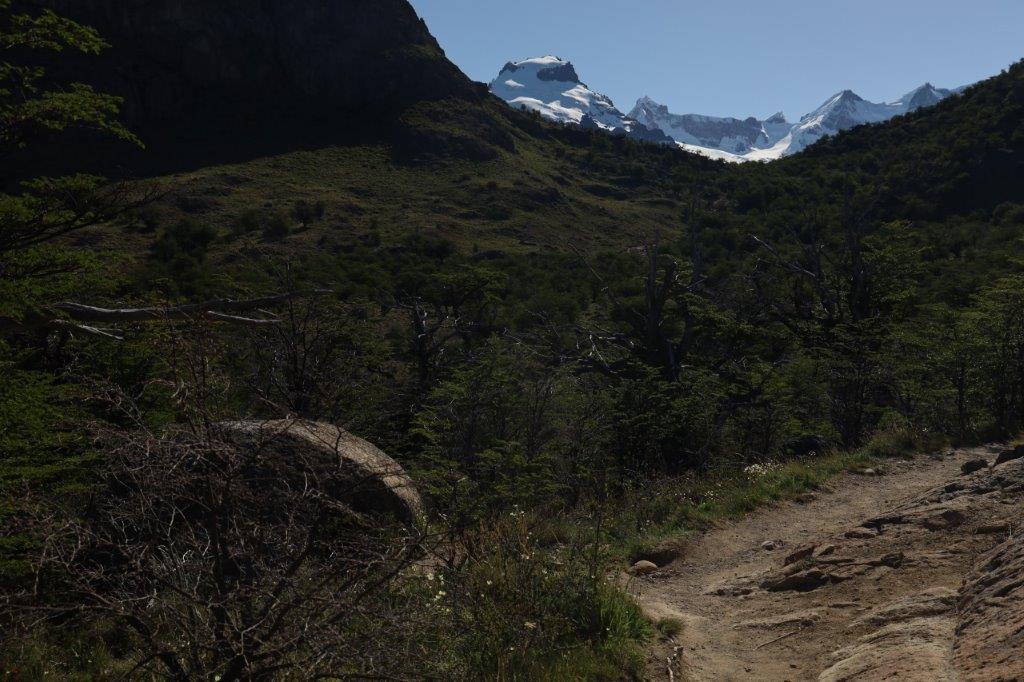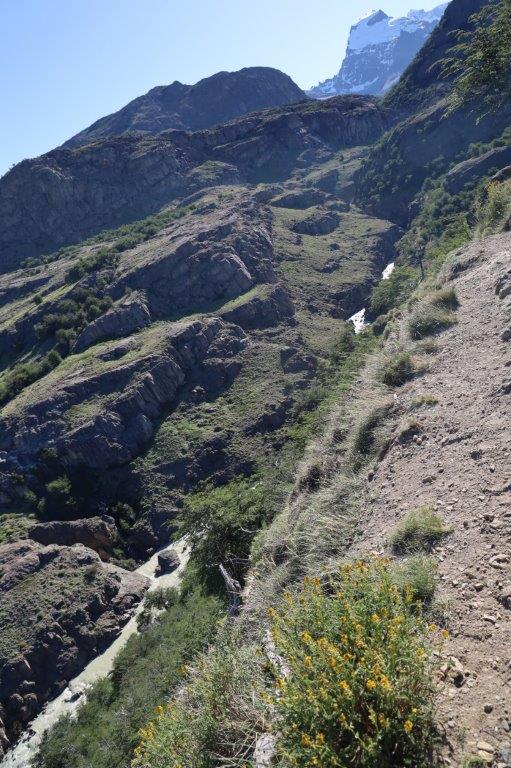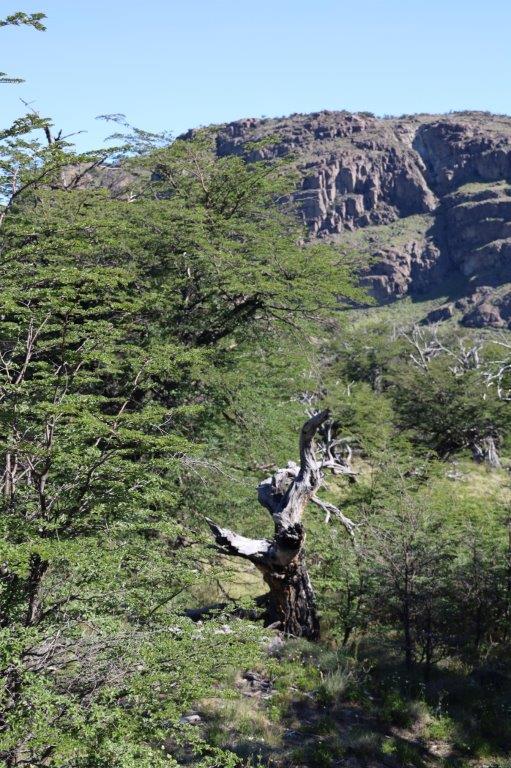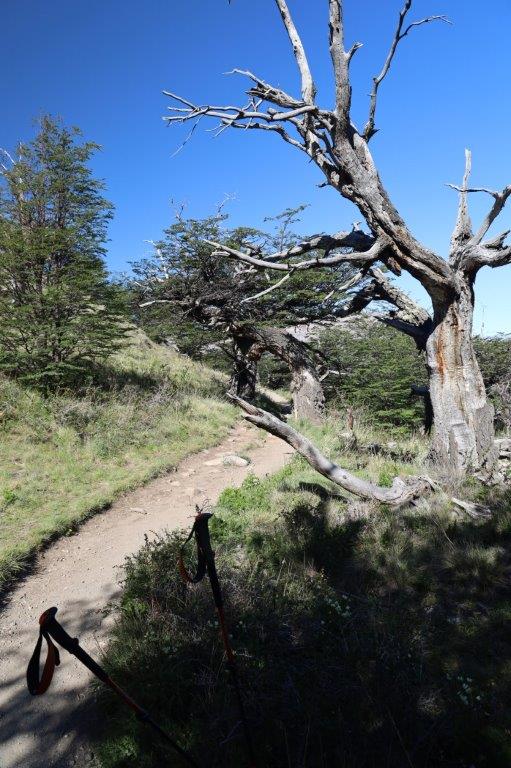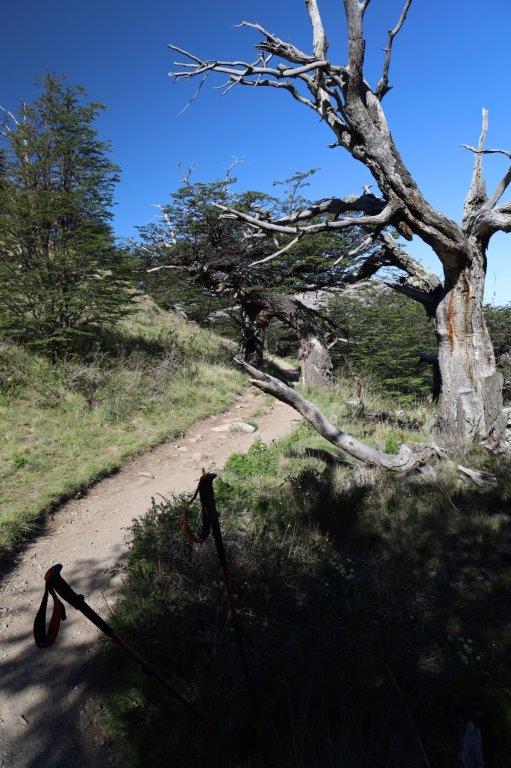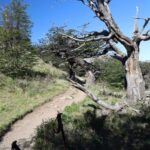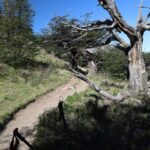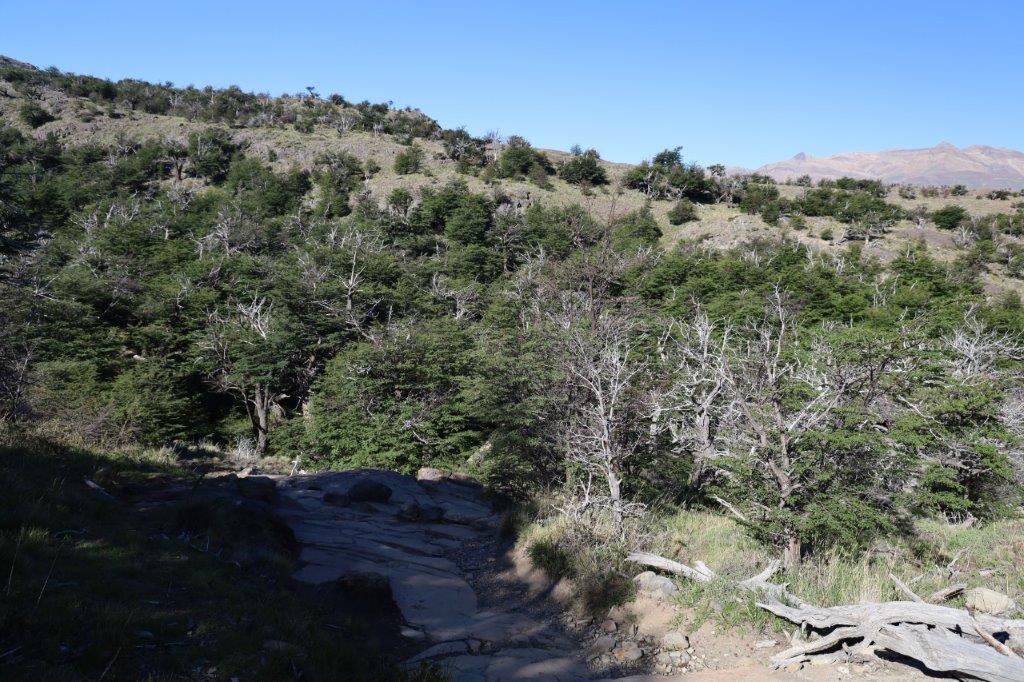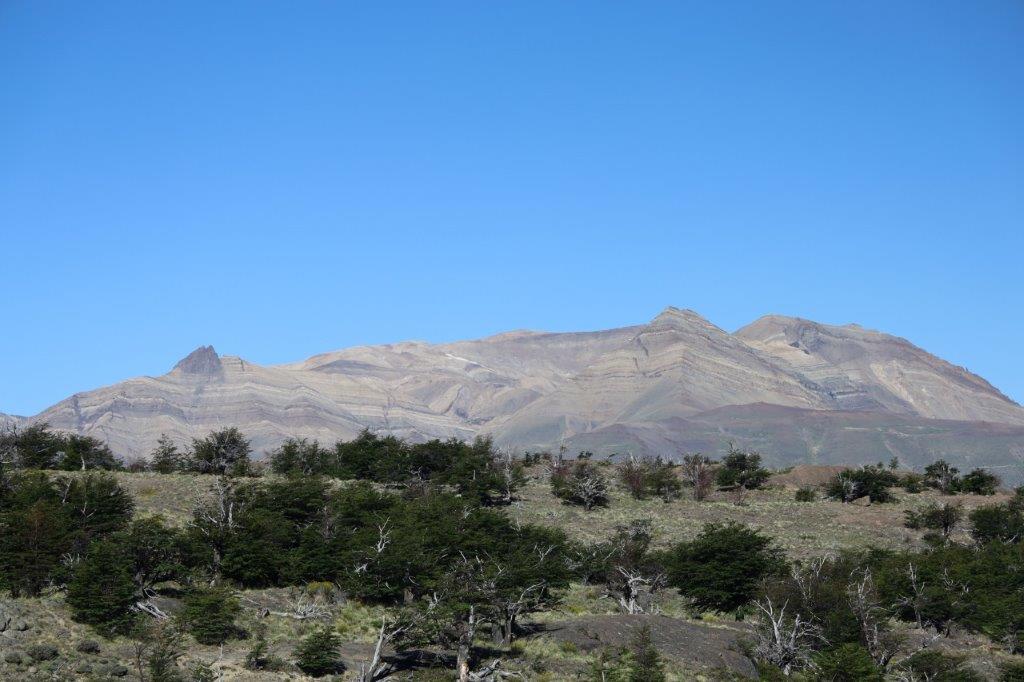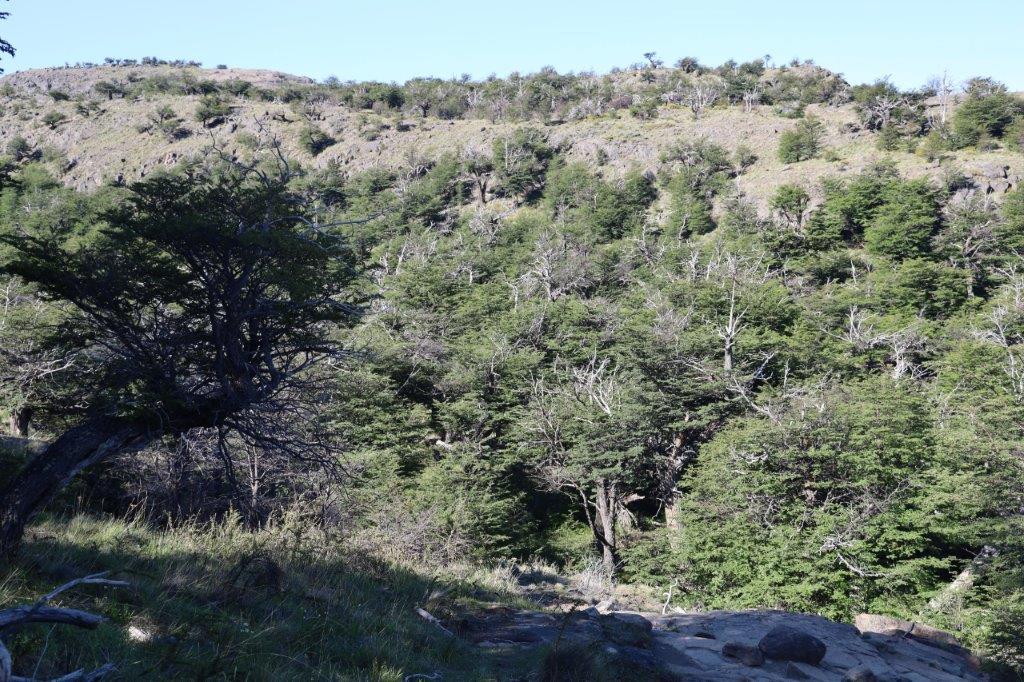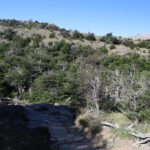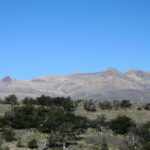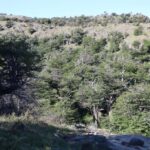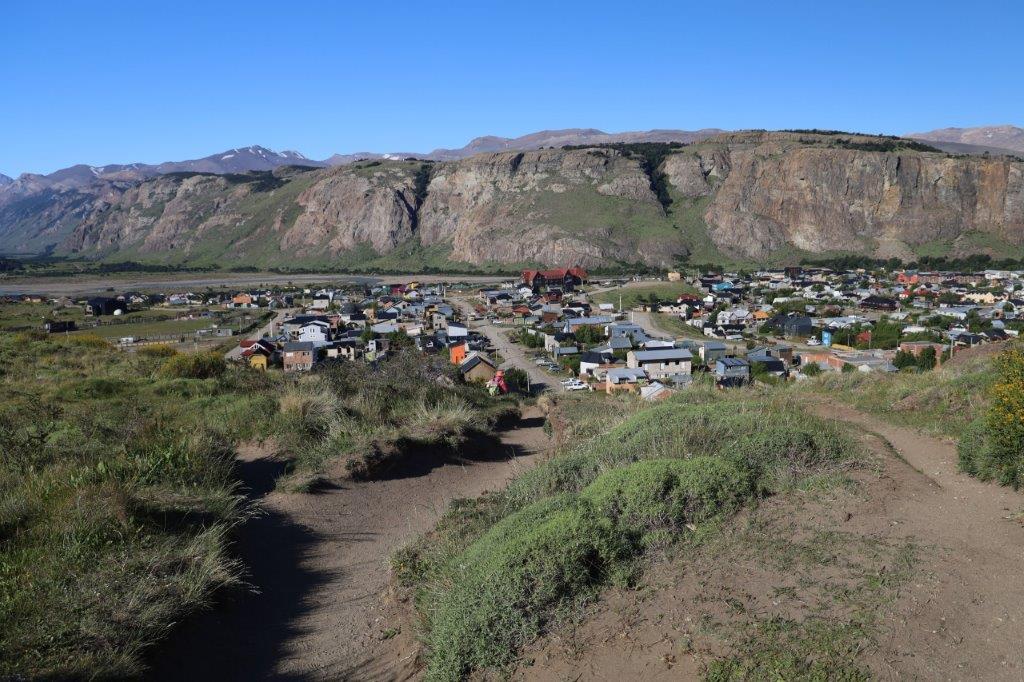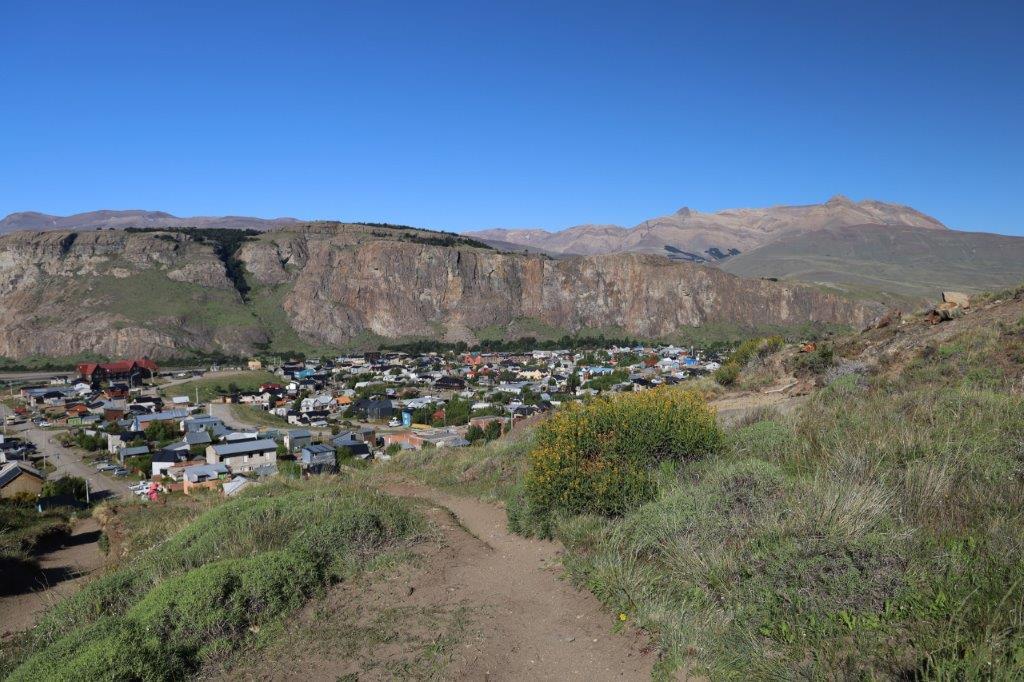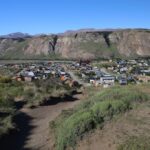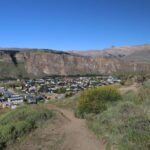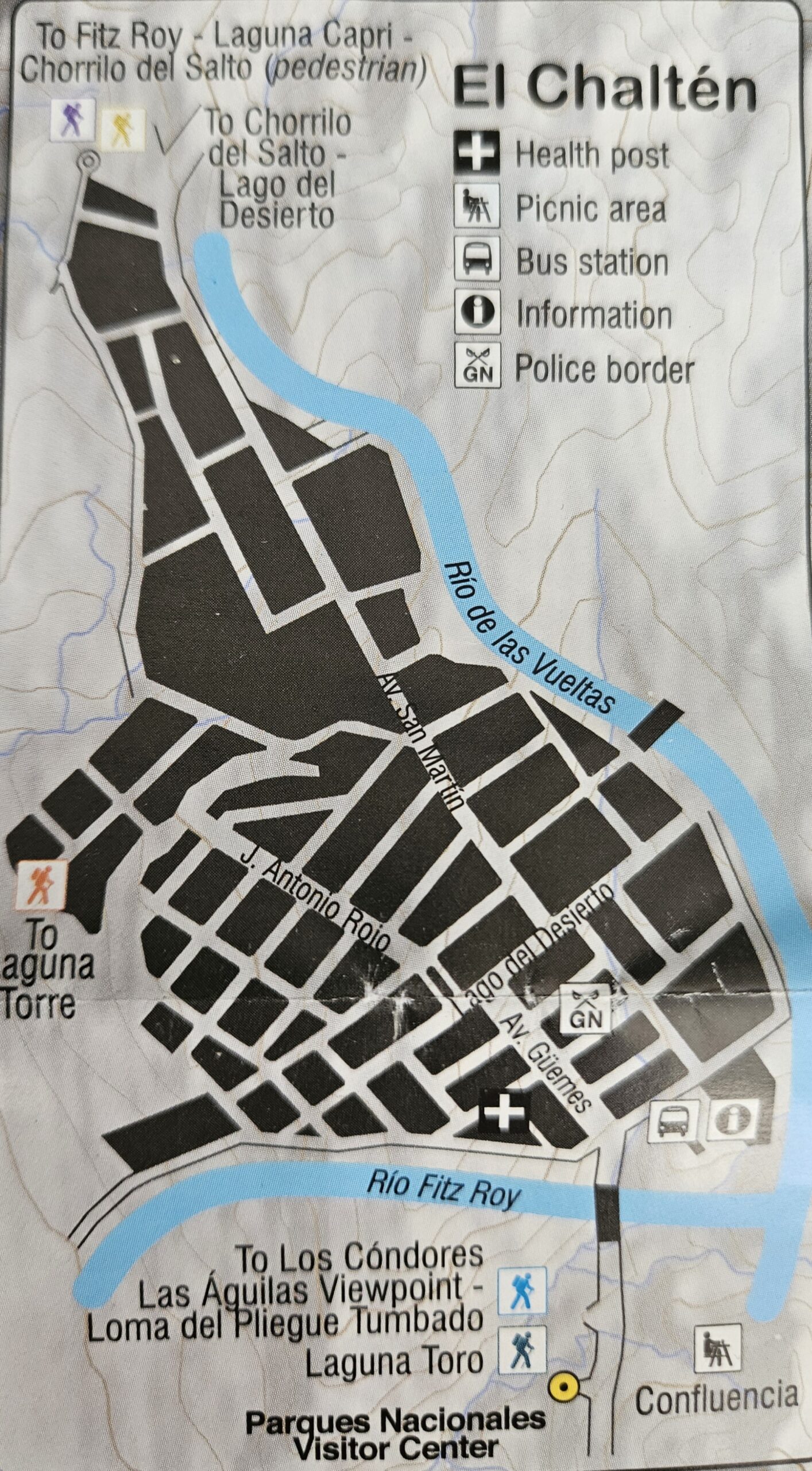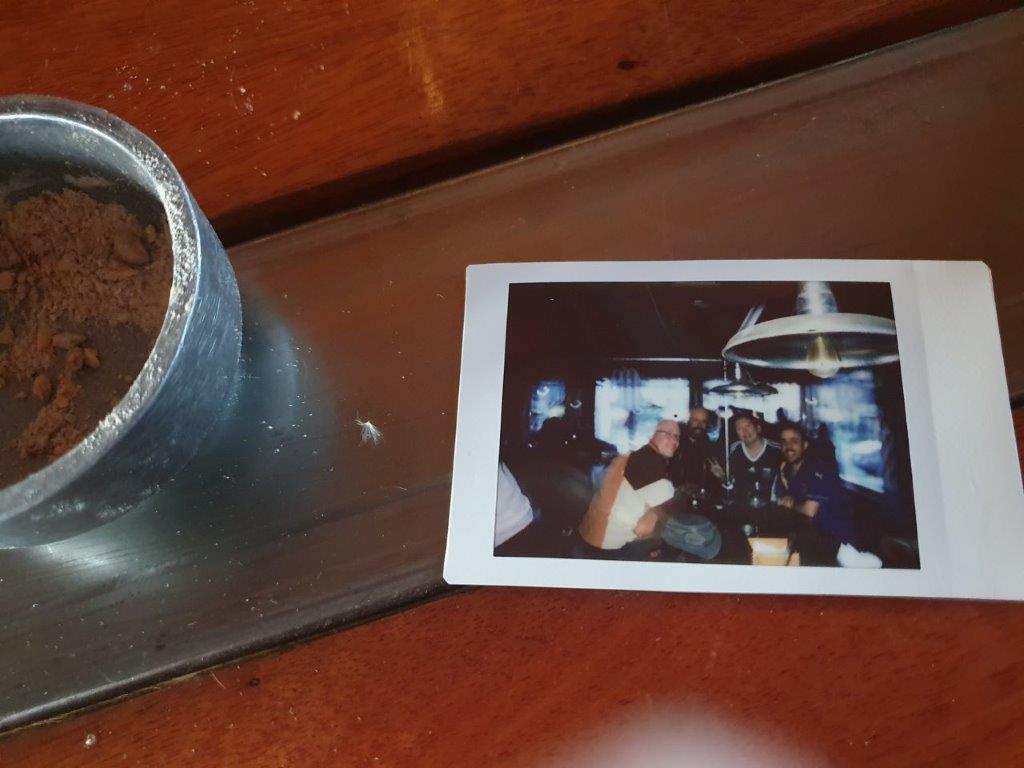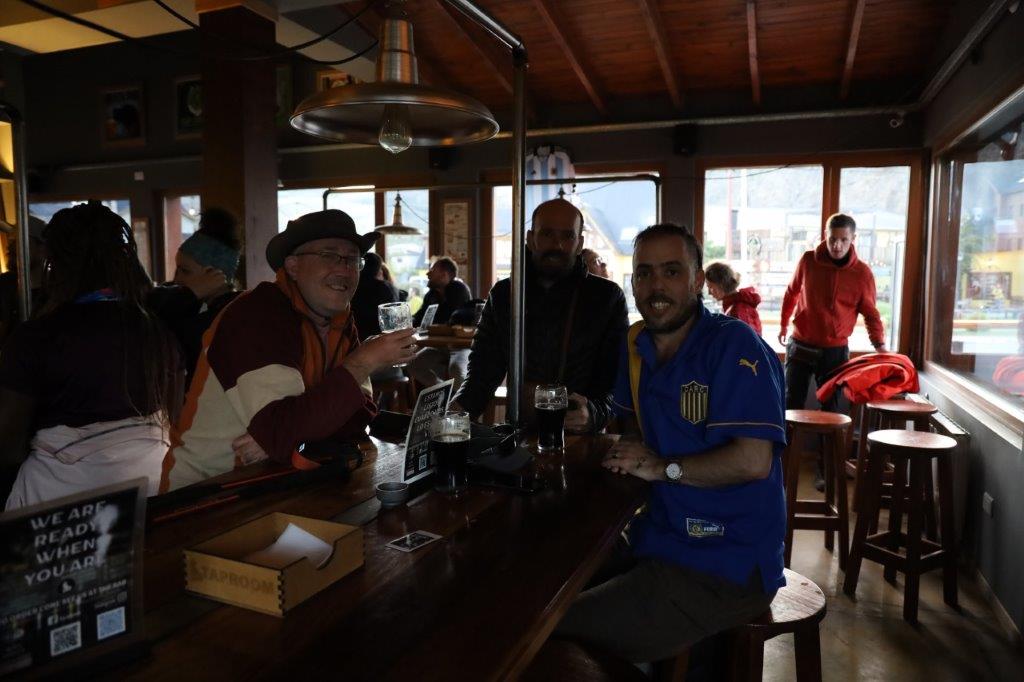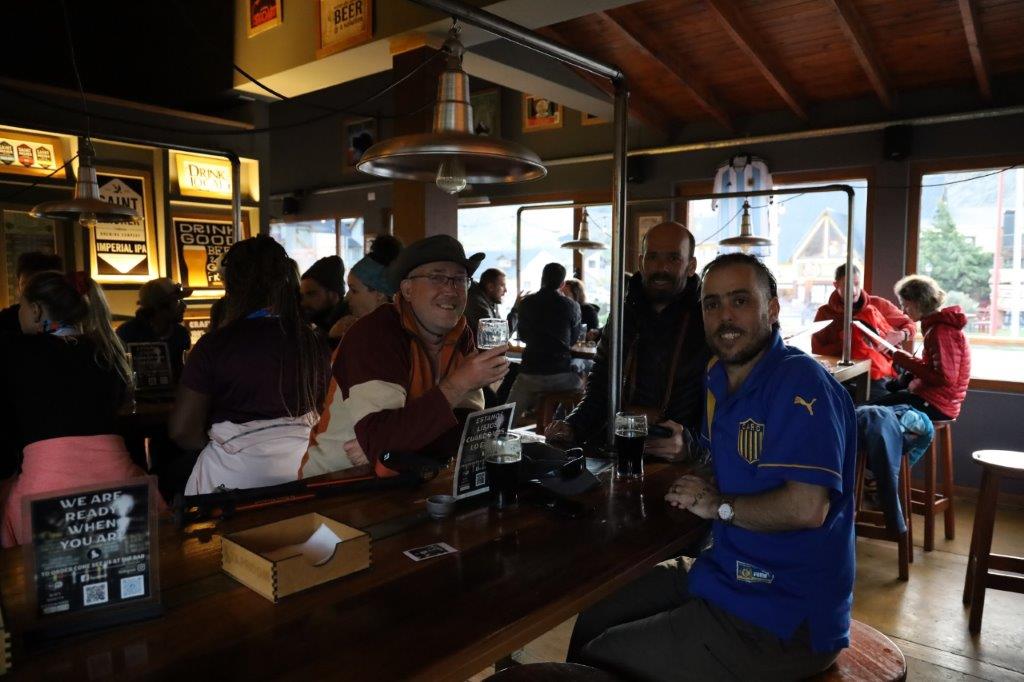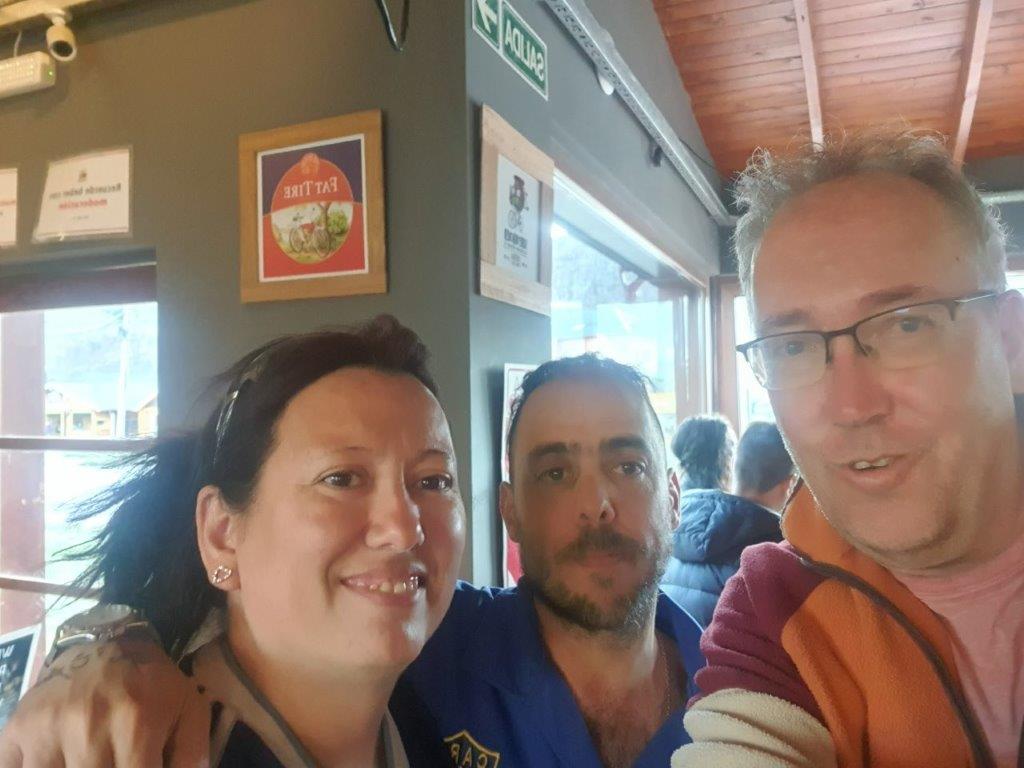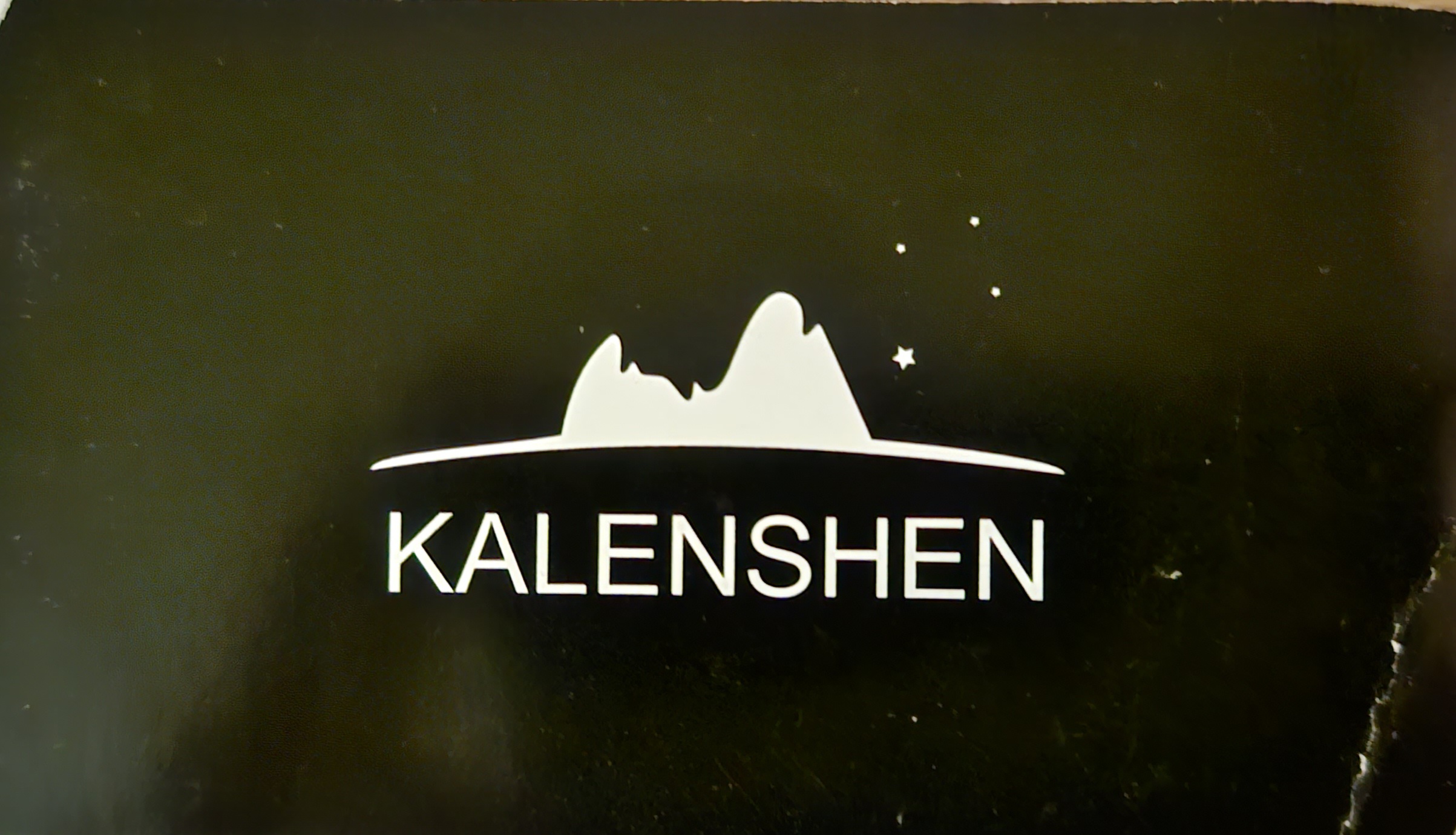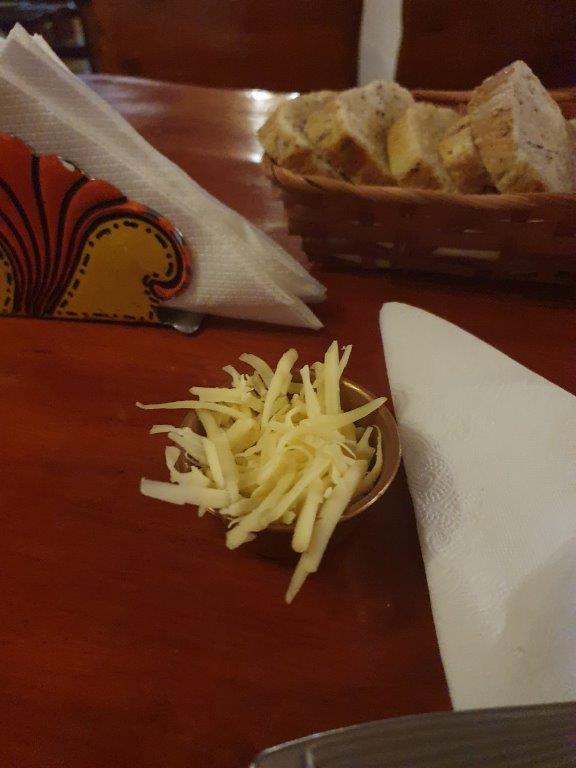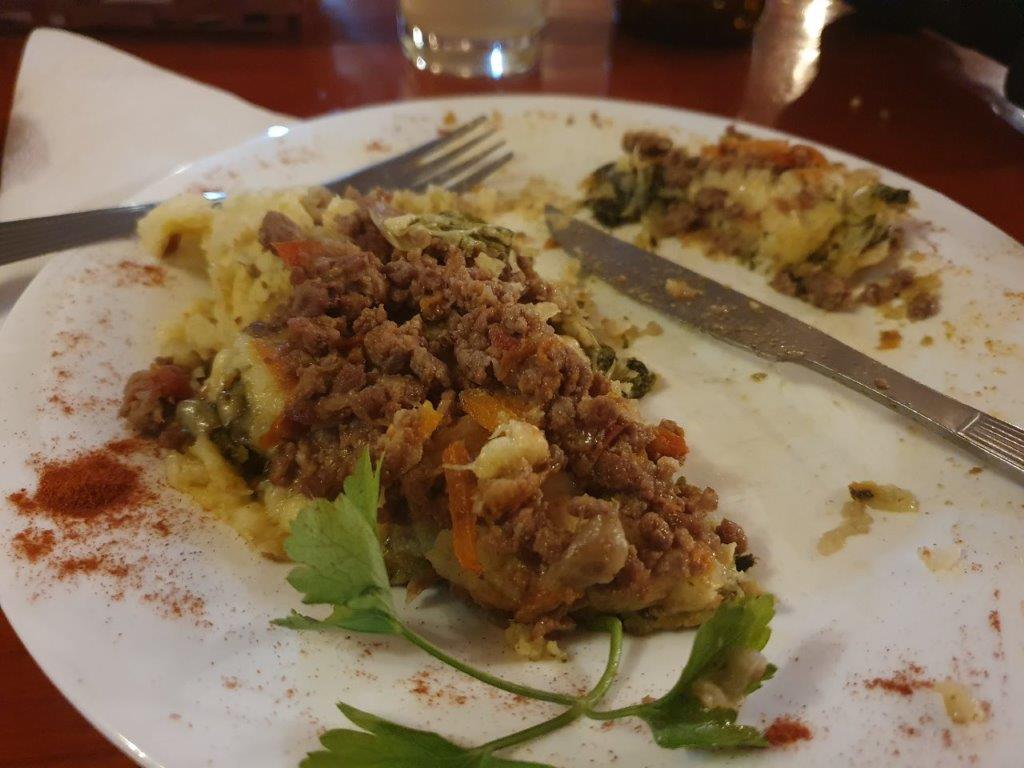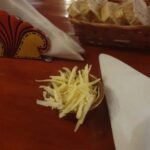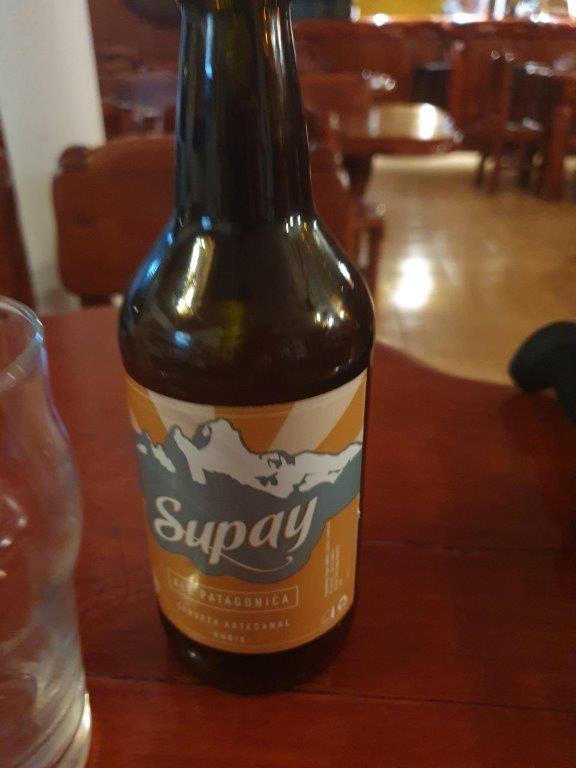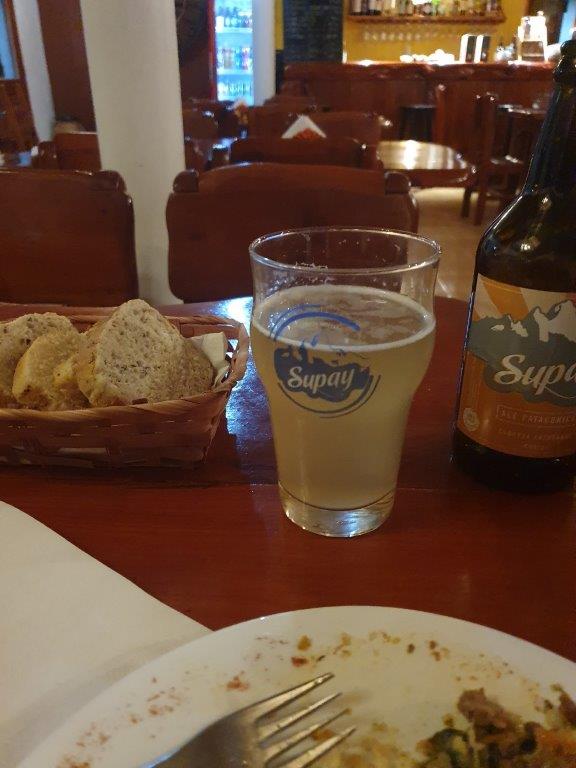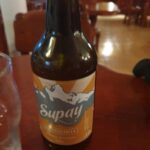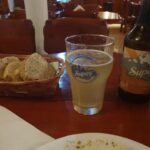23. Argentina: Walking on the Torre Trail to the Mirador Cerro Torre (6 km) (Los Glaciares National Park/UNESCO World Heritage Site)
After dropping his luggage in the hotelroom of the Kalenshen hotel, which was near El Chaltén’s main street, The Wandelgek took his walking gear and camera’s and walked through the village to the start if the Laguna Torre Trail.
He was not planning to walk the whole trail but just the first stretch towards Mirador Cerro Torre. This was the steepest part of the whole trail and it provided plenty of great views for an afternoon walk.
The complete trail is about 18 kilometers (one way 9 kilometers) long and although not difficult (the main ascends are at the first 3 kilometers (so until you reach the Mirador Cerro Torre), it is a bit long for just an afternoon walk (although that depends on your physical condition and on how late sun sets). It is possible to camp at Lago Torre but it is not allowed to walk through the park after sunset.
From the village there was first a firm climb up to gain some height.
After that the trail gradually kept ascending and ran through some bushes and low growing trees. In this area there are almost no high trees, like e.g. de fitzroya or pine trees that had been growing in the northern lake district.
The first mountain that caught The Wandelgek’s eye was Cerro Nato …
The trail now slowly ascends…
The trail now creeps closer towards a ravine and Cerro Torre becomes visible too, left of Cerro Nato…
Deep down the wild white water of the Rio Fitz Roy flows away from the mountains…
Advancing on the trail, there are some views to the right where Cerro Fitz Roy and even Cerro Poincenot can be seen.
Then the trail goes a bit down and up again through a bowl and advances towards a small tree covered ridge…
You’ll need to ascend again and this is a somewhat firmer part of the trail…
The Wandelgek was now in “Walker’s Heaven” as he liked to describe areas like this.
There are virtually no other walkers (well actually there are but the trail has enough length to spread them), the weather is ideal, not too warm, not too cold, not too wet) and the views were incredible.
He also liked the feeling that at the end of his trail walk a pub or something like that could be waiting for him, because his 1st impression of El Chaltén certainly gave him the impression that this place was a walker’s paradise as well.
The mid section of the walk towards the mirador (viewpoint) of Cerro Torre was easy and that was a good thing because The Wandelgek could look around at the Andes Summits and play a bit with his new camera and tripod, which he brought as a test. The test went well, but only because he had, as a precaution, placed his tripod next to a large bush, which kept the fierce winds from toppling it. He immediately decided that the tripod was a waste of time and effort in these windy parts of the world and stopped using it during this journey. The result of the test however was a vid that gave a rather good impression of the walking conditions:
Next was a woody ridge to ascend towards the actual mirador.
It was not extremely difficult, but when wet conditions can become a lot worse because of slippery stones and especially the treacherous winds.
At the top of the ascend the world opened…
There were still some small trees, but the view towards Cerro Torre was breathtaking and certainly worth the effort of walking here…
There were a few wooden benches and The Wandelgek decided this was a great place to shoot some pictures of Cerro Torre and its magnificent glacier and subsequently to have lunch and drink.
He was so pleased with the weather, because when preparing his journey to Patagonia he had seen the many examples of pictures and videos of this area that had been made while conditions were not as picture perfect as this. Clouds and shrouds of mist veiling the summits of the mountains can be beautiful, but now he could really test the polarisation filters and lenses of his new camera and the results were astonishing.
Some pictures of The Wandelgek at the Mirador Torre sign…
Far away the Rio Fitz Roy flowed away from the glaciers towards the Patagonian desert, which seemed far away overhere, where there was an abundance of water, but which actually wasn’t that far away at all…
It was also possible to see Cerro Fitz Roy from the mirador area….
From here the trail went on towards the Mirador Lago Cerro Torre, but The Wandelgek decided to return towards El Chaltén, to find that pub.
Some of his camera tests involved using and finding the limits of his new telephoto lense…
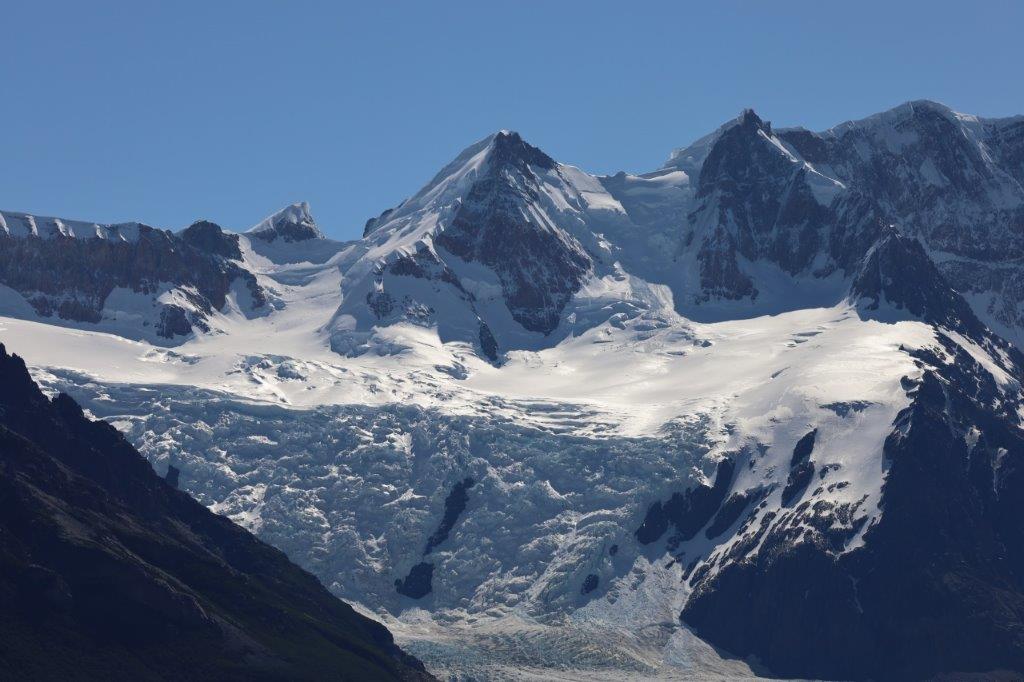 The glacier of Cerro Torre was a great subject for that…
The glacier of Cerro Torre was a great subject for that…
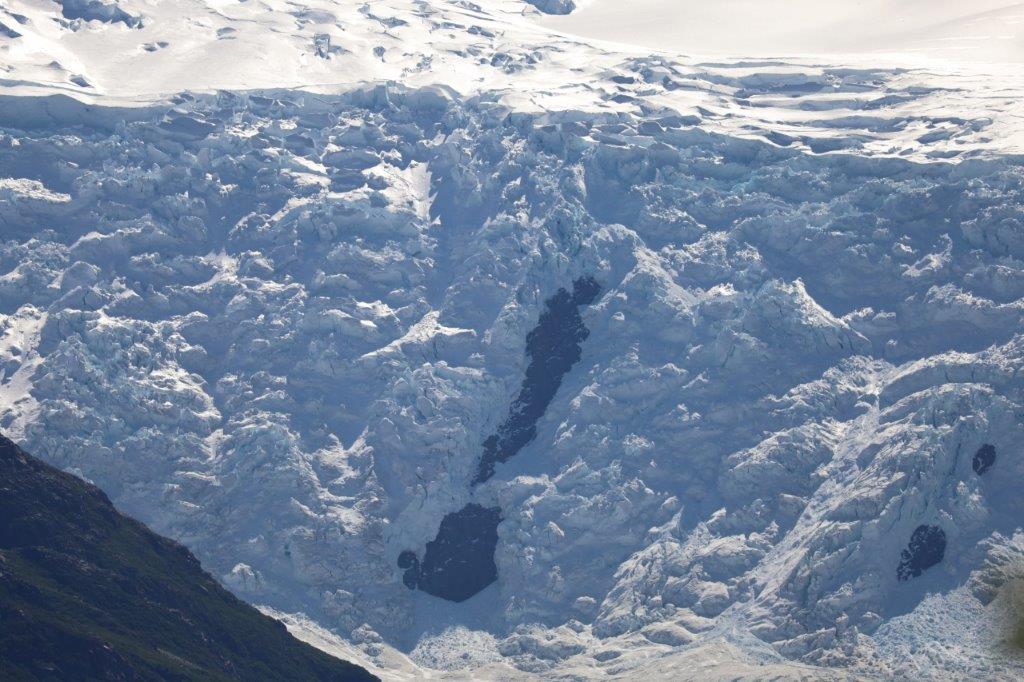 The area of the Andes that The Wandelgek was now visiting also contained the Southern Patagonian Ice Field.
The area of the Andes that The Wandelgek was now visiting also contained the Southern Patagonian Ice Field.
The Southern Patagonian Ice Field, located at the Southern Patagonic Andes between Chile and Argentina, is the world’s second largest contiguous extrapolar ice field (the 1st being the Greenlandic icesheet). It is the bigger of two remnant parts of the Patagonian Ice Sheet, which covered all of southern Chile during the last glacial period, locally called the Llanquihue glaciation.
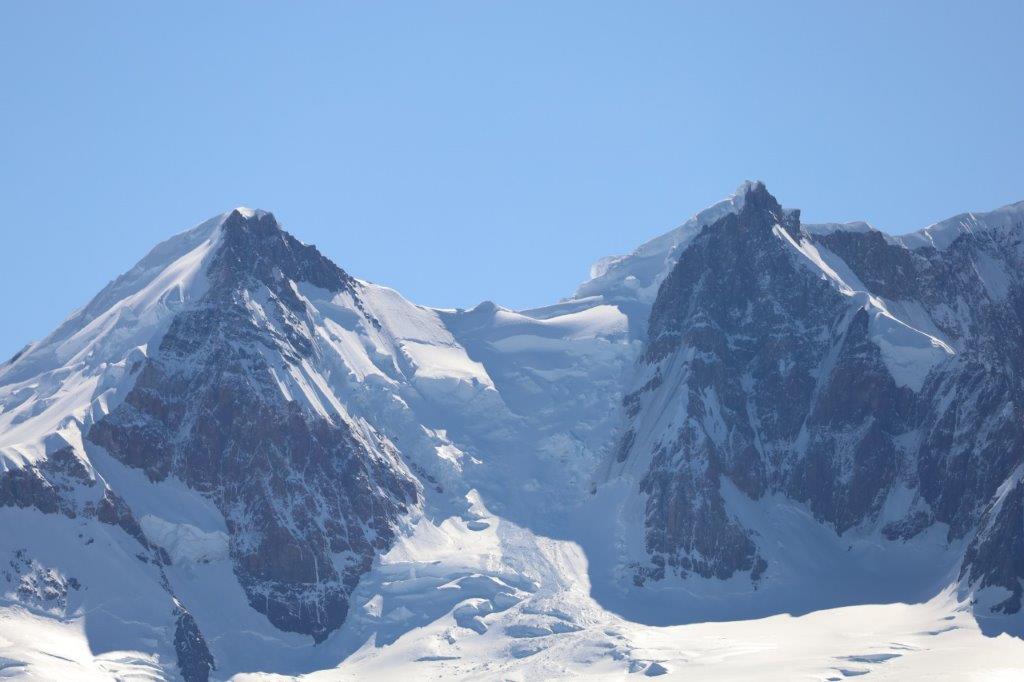 The Southern Patagonia Ice Field extends from parallels 48° 15′ S to 51° 30′ S for approximately 350 kilometres (220 mi), and has an approximate area of 16,480 km2 (6,360 sq mi), of which 14,200 km2 belong to Chile and 2,600 km2 belong to Argentina.
The Southern Patagonia Ice Field extends from parallels 48° 15′ S to 51° 30′ S for approximately 350 kilometres (220 mi), and has an approximate area of 16,480 km2 (6,360 sq mi), of which 14,200 km2 belong to Chile and 2,600 km2 belong to Argentina.
The ice mass feeds dozens of glaciers in the area, among which are the Upsala (765 km2), Viedma (978 km2) and Perito Moreno (258 km2) in the Los Glaciares National Park in Argentina, and the Pío XI Glacier or Bruggen Glacier (1,265 km2, the largest in area and longest in the southern hemisphere outside of Antarctica), O’Higgins (820 km2), Grey (270 km2) and Tyndall (331 km2) in Chile. The glaciers going to the west flow into the fjords of the Patagonian channels of the Pacific Ocean; those going to the East flow into the Patagonian lakes Viedma and Argentino, and eventually, through the rivers de la Leona and Santa Cruz, to the Atlantic Ocean.
An important part of the ice field is protected under different national parks, such as the Bernardo O’Higgins and Torres del Paine in Chile, and the aforementioned Los Glaciares in Argentina.
There are two known volcanoes under the ice field; Lautaro and Viedma. Due to their inaccessibility they are among the least researched volcanoes in Chile and Argentina.
The Wandelgek retraced his steps towards El Chaltén occasionally meeting another lonely hiker…
Fjäll blommar… (well the vegetation starts to look more Arctic overhere)…
Breath in….breath out….breath in… breath out….
The shadows were growing and were getting darker…
Then he heard the sound of rushing water and soon he saw the ravine of the Río Fitz Roy again…
A 6 kilometer trail on the 1st afternoon at this northernmost section of the Los Glaciares National Park and already great views on these really beautiful craggy Andes summits.
He now kept following the river downstream until the trail left the gorge behind and the descend towards El Chaltén started…
First slow…
Then a bit steeper…
Then El Chaltén was in sight. A last descend and The Wandelgek entered the village.
El Chaltén
El Chaltén had started a a tiny village, but because of backpackers, hikers and other tourism it had grown quite a bit. It was still not a very large village though. Most hotels and restaurants were along one specific road which ran all through the village.
The Wandelgek walked from the orange (above) starting point of the hike to Laguna Torre towards Avenido San Martin …
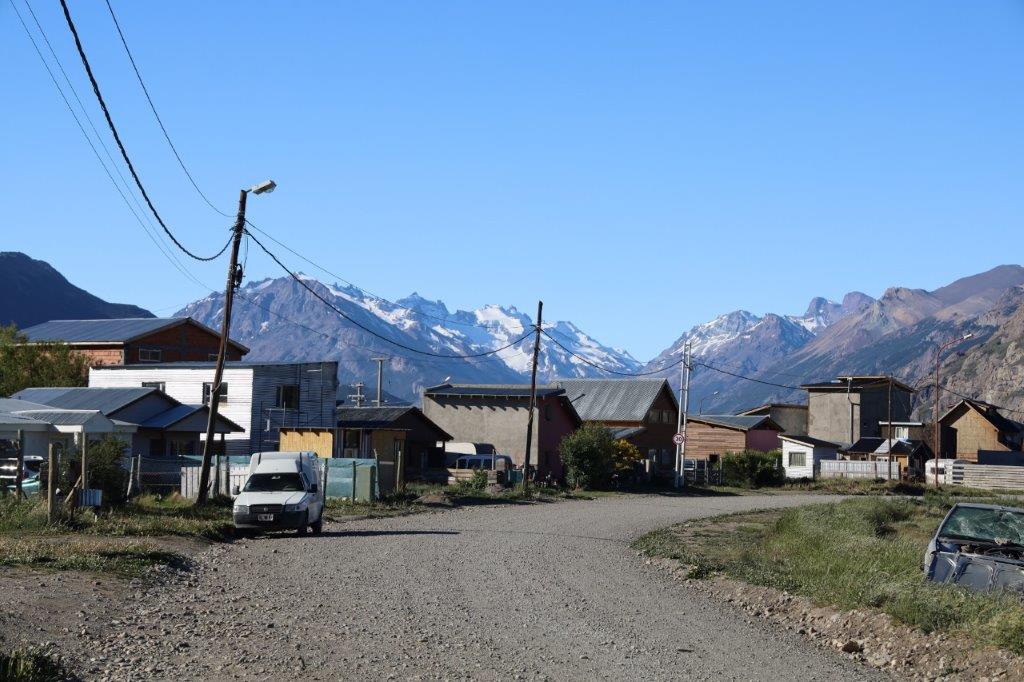
… and then turned left towards where his hotel was. But he wanted to have some dinner or grab a bite first, preferably in a place where they had good beers too (like Manush at San Carlos de Bariloche did have). He passed several bars, restaurants and even brewery pubs, but they didn’t fit, mainly because they proclaimed to be brewries, but only offered 2 or 3 different beer types (pilsener beer included) and he kept walking. The amount of restaurants began to slim down and it seemed he was reaching the end of the centro civico of El Chaltén, when just before he wanted to give up and return towards the area with the many bars and restaurants, he saw an intriguing sign which read:
La Zorra
As he looked a bit better, he saw the La Zorra Taproom, which offered a wide variety of beers from the excellent local El Calefate based microbrewery La Zorra and it looked exactly like what he had been searching for all along.
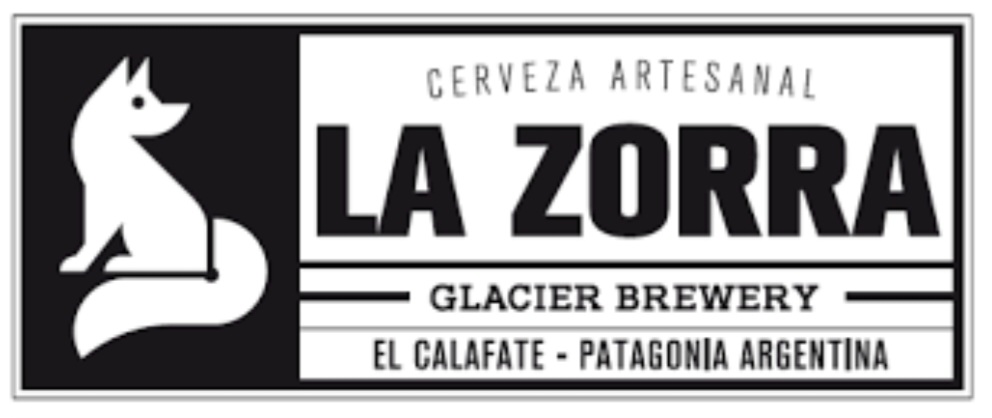
The Wandelgek entered and sat down at one of the long central tables. There were not a lot of people yet, but as the evening progressed, it became crowdier there were hikers, backpackers, motorbike riders (lots of adventurers drive the ruta 40 or the pan american highway by motor nowadays) and happy local football fans (Argentina had won the match against Poland).
At the wall behind the bar (which boasted an impressive array of 12 beer taps) was a large chalk school board with an immense amount of 12 different beer types to choose from.
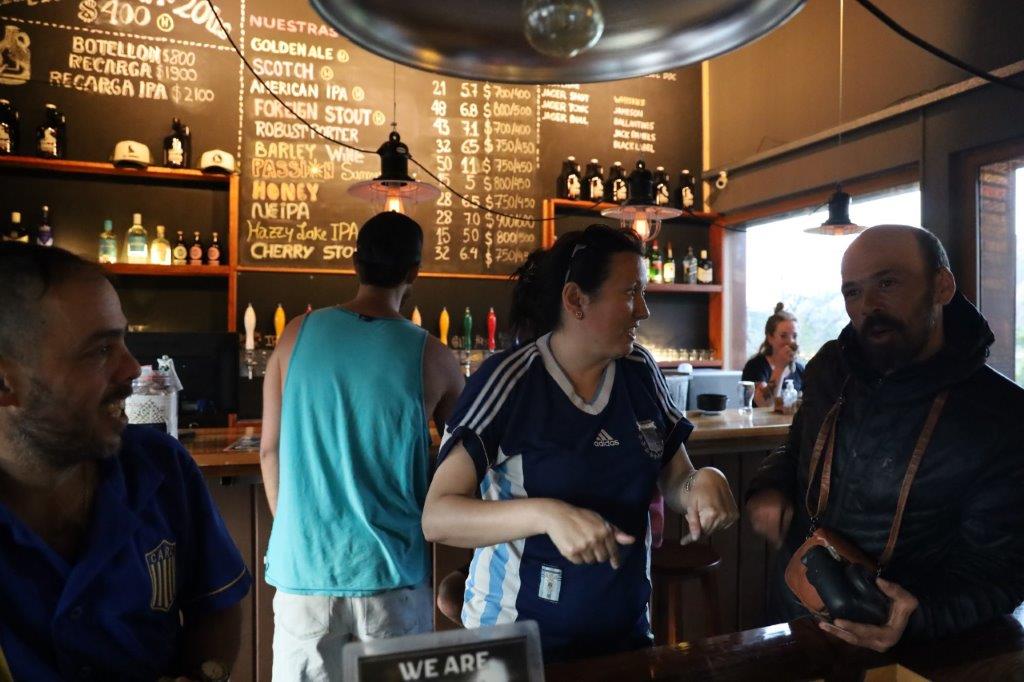 After a while I found my self surrounded by some really nice local people who had been watching the match and were now celebrating the victory.
After a while I found my self surrounded by some really nice local people who had been watching the match and were now celebrating the victory.
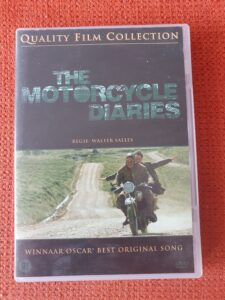 A motor biking photo journalist from Brazil, who travelled on the ruta 40 and who was making polaroids of people he met on the road, gave me this polaroid to remember the evening. I love such roadtrips and it reminded me of this movie I once saw of a very young medicine student and his friend, who drive on a motor over the pampas and the patagonian steppes, crossing the Andes into Chile turning north towards Bolivia. That medicine student became Che Guevara when he saw all the poverty and social injustice driving through south america. Eventually he tried to change things by means of revolutions. But that was not part of that movie.
A motor biking photo journalist from Brazil, who travelled on the ruta 40 and who was making polaroids of people he met on the road, gave me this polaroid to remember the evening. I love such roadtrips and it reminded me of this movie I once saw of a very young medicine student and his friend, who drive on a motor over the pampas and the patagonian steppes, crossing the Andes into Chile turning north towards Bolivia. That medicine student became Che Guevara when he saw all the poverty and social injustice driving through south america. Eventually he tried to change things by means of revolutions. But that was not part of that movie.
I also met with 2 Argentine heroes of the voluntary fire fighters brigade at the Los Glaciares National Park. Now I’ve been travelling for many years and I’ve seen a lot of what fire fighters do in nature to prevent fires from spreading quickly, like e.g. making vegetation free corridors on the flanks of Mount Kenya or flying airplanes carrying water to extinguish fires in areas that are difficult to reach from the ground (like e.g. the dense Taiga forests near Lake Baikal) or where fire threatens villages or homes. This work becomes more and more important now that climate change heats up our planet and natural habitats become drier and thus more flamable then before. I have the utmost respect and admiration for people who execute this dangerous work.
Naturally (both were football fans) we also discussed the victory of the Argentine football team, the difference between Diego Maradona and Lionel Messi and the progress of the Argentine and Dutch teams in the Worldcup.
So it was an evening full of good company and good beers as well, because I have to admit that the La Zorra brewery surprised me with their wide array of really tasty beers (most of the European style), of which I really started to like the Scotch Ale.
I didn’t finish late though because I was really tired after the night flight and the trail walking and the beer drinking.
So after a few beers The Wandelgek exchanged some social media contact details and said goodbye and on the route back to the Kalenshen hotel he popped in to a supermarket at the other side of the street from La Zorra to buy some food and drinks for tomorrow’s drive.
The Kalenshen Hotel
The Wandelgek had not eaten yet so in the restaurant room of the hotel he ordered some food …
… and bottled beers of the local El Chaltén beer named Supay …
… to end the day. The The Wandelgek went to his room for a hot shower and to rewatch todays football games, before going to sleep.

